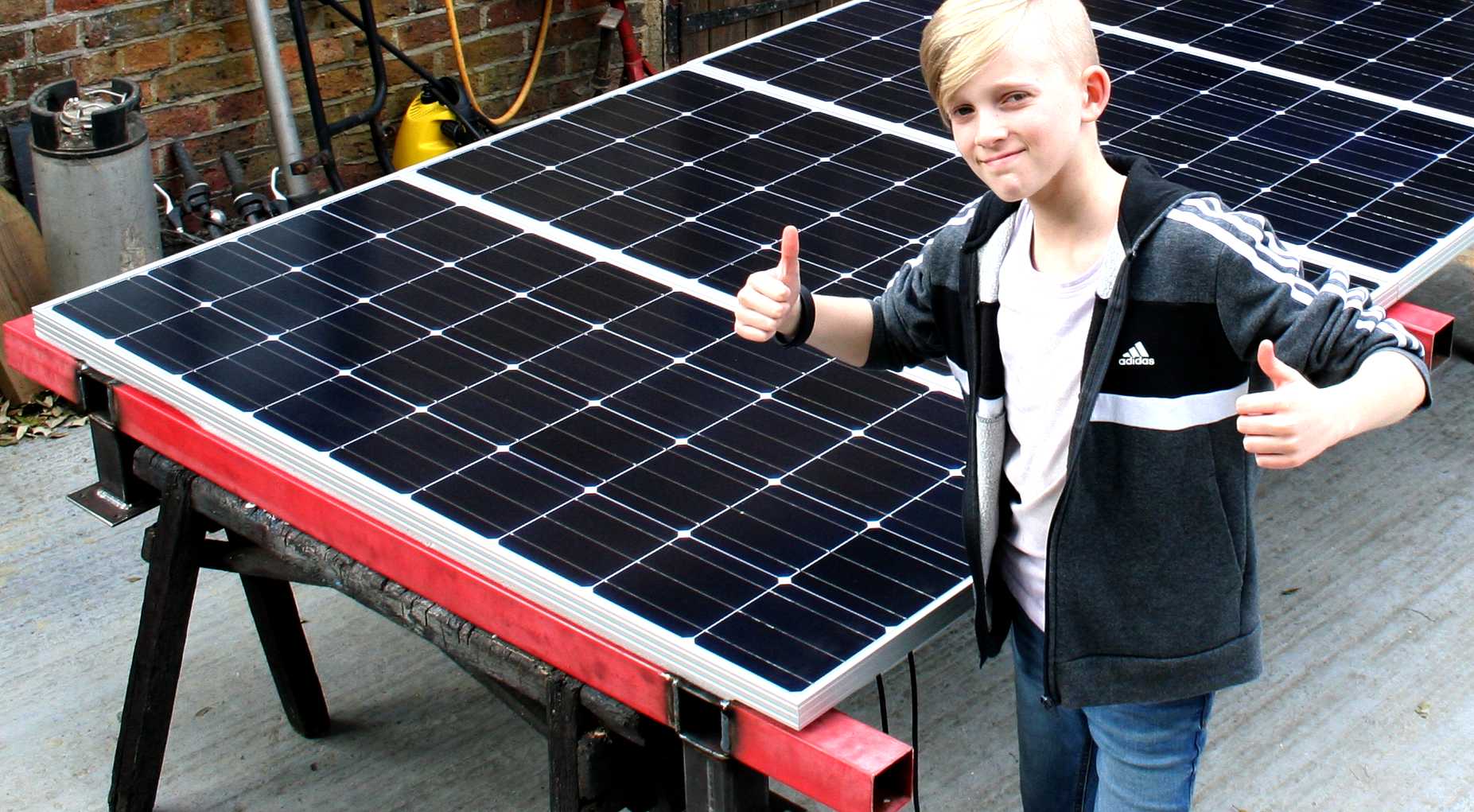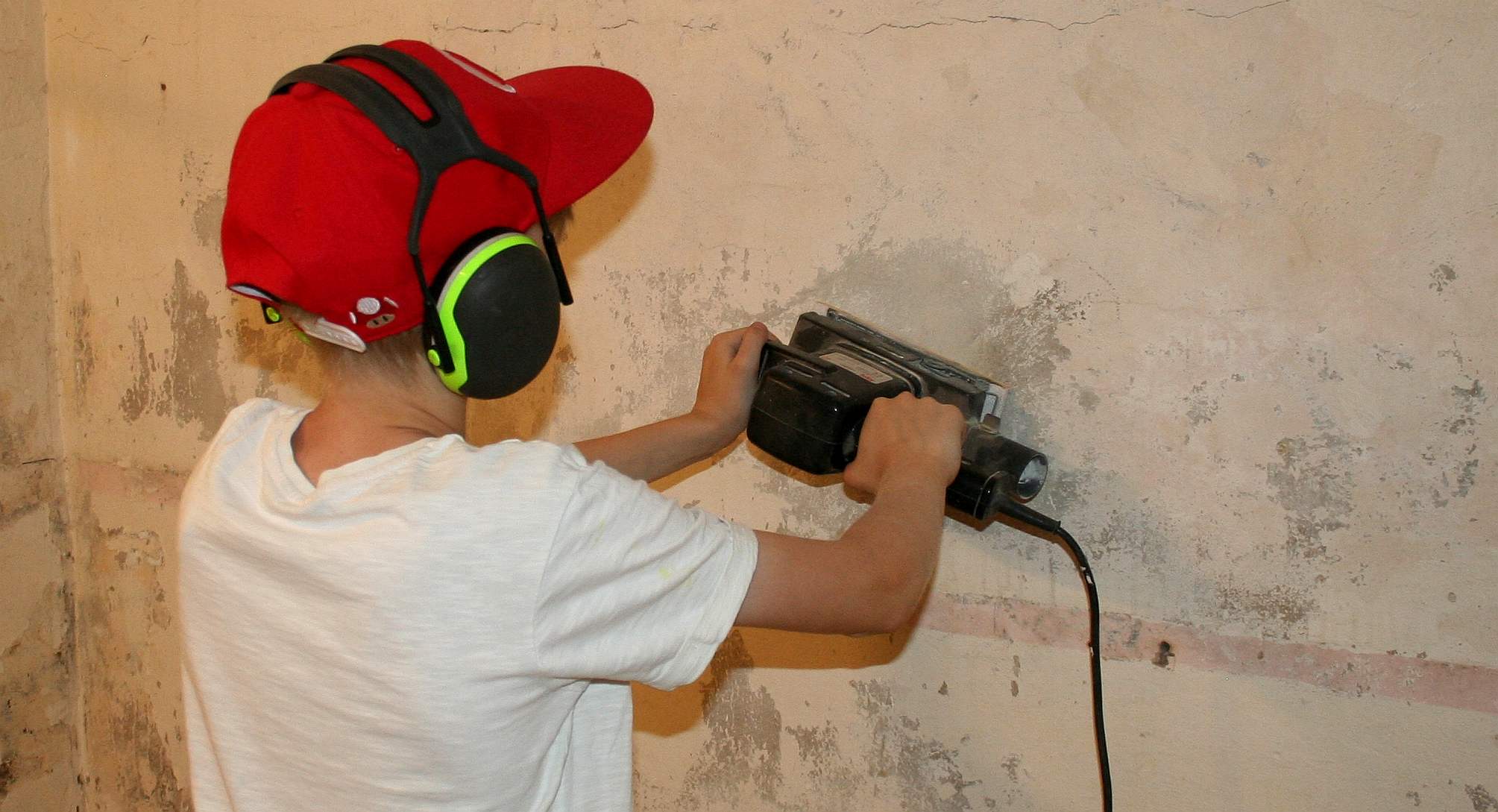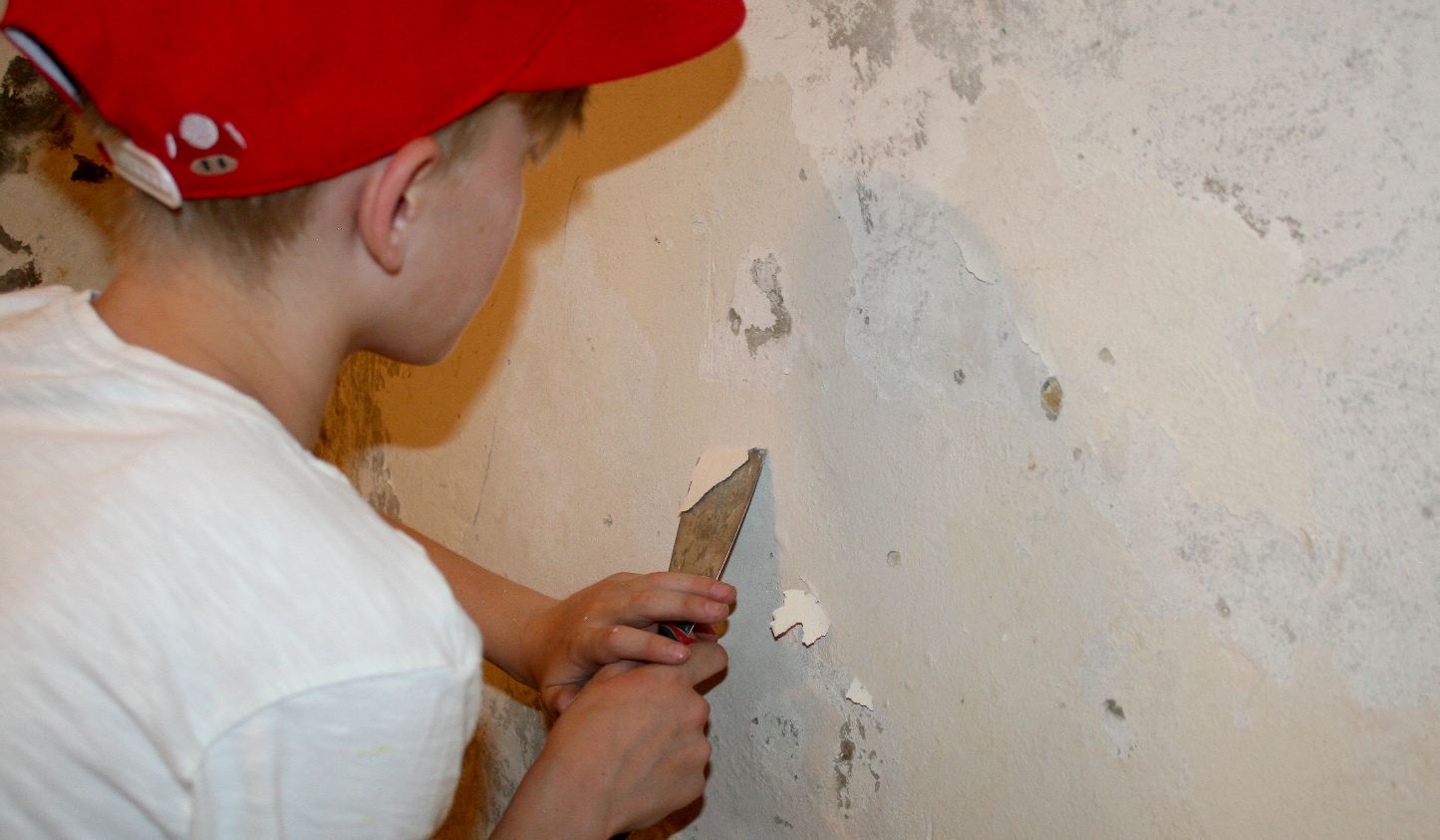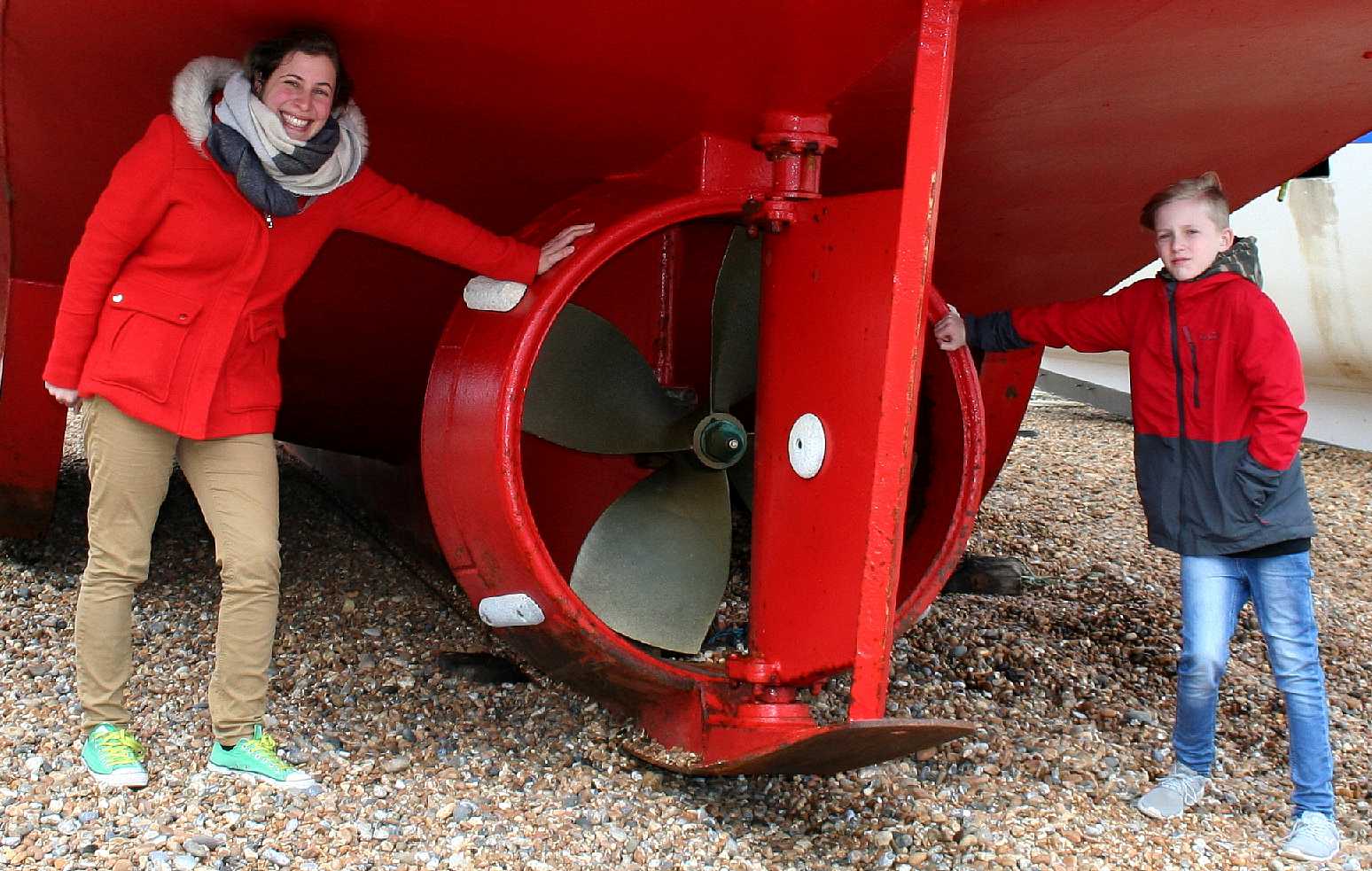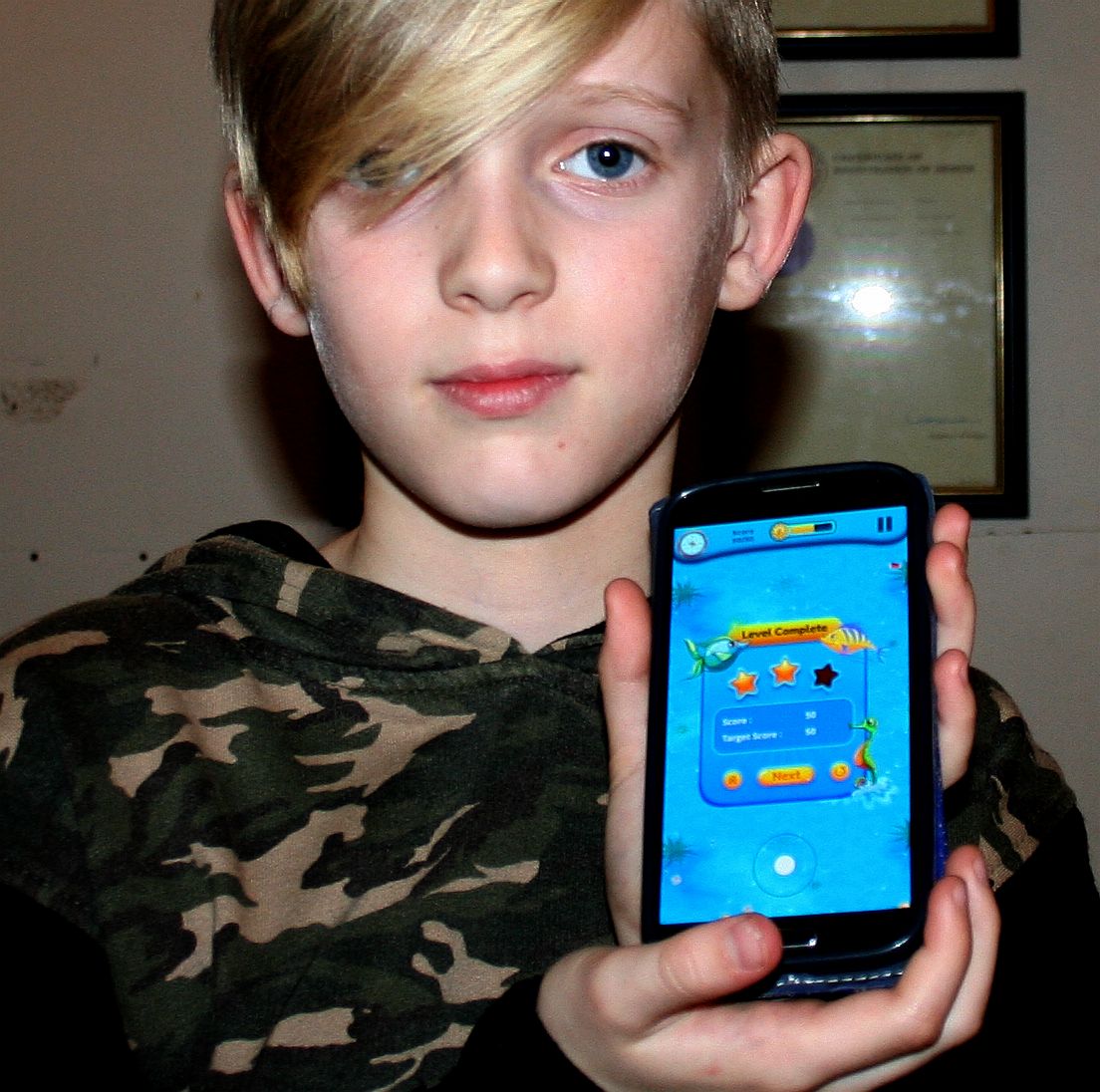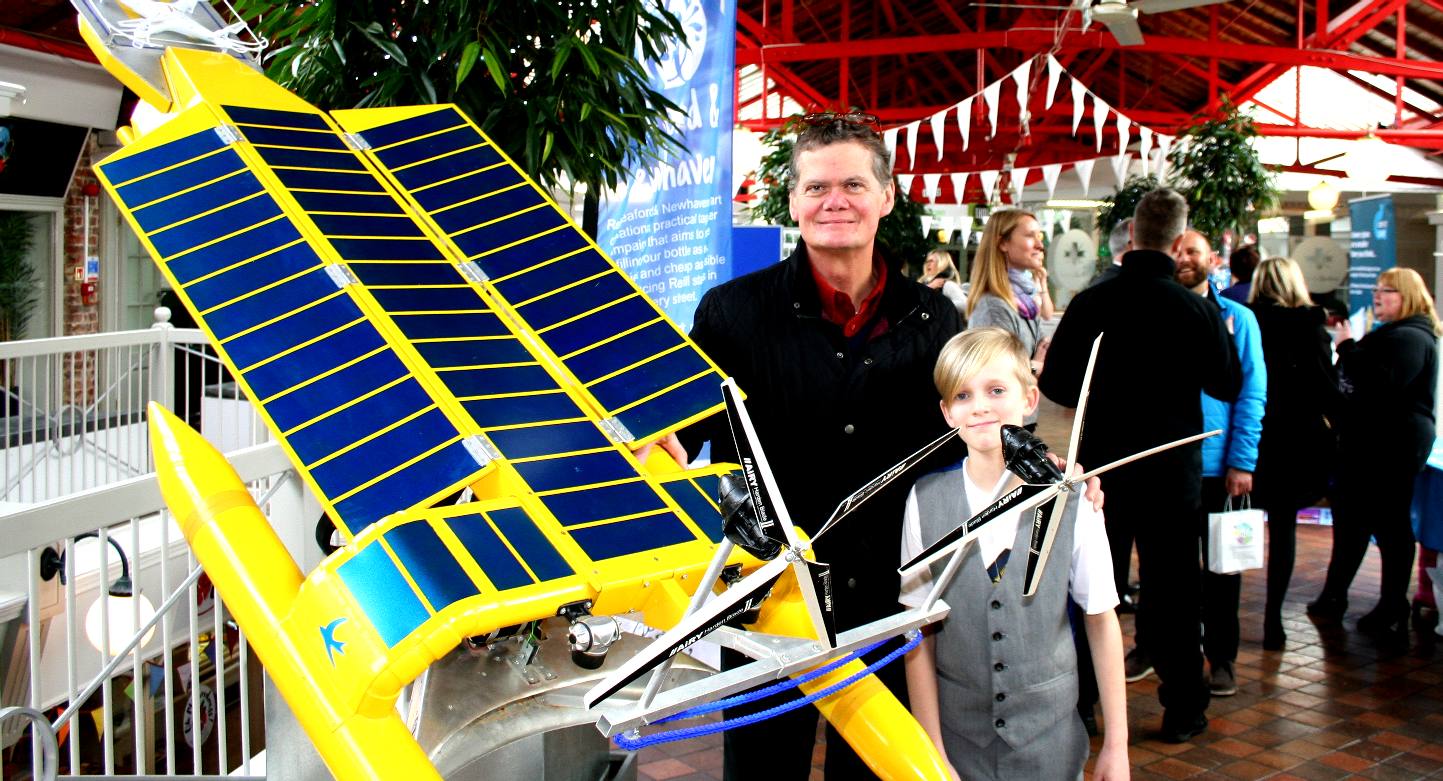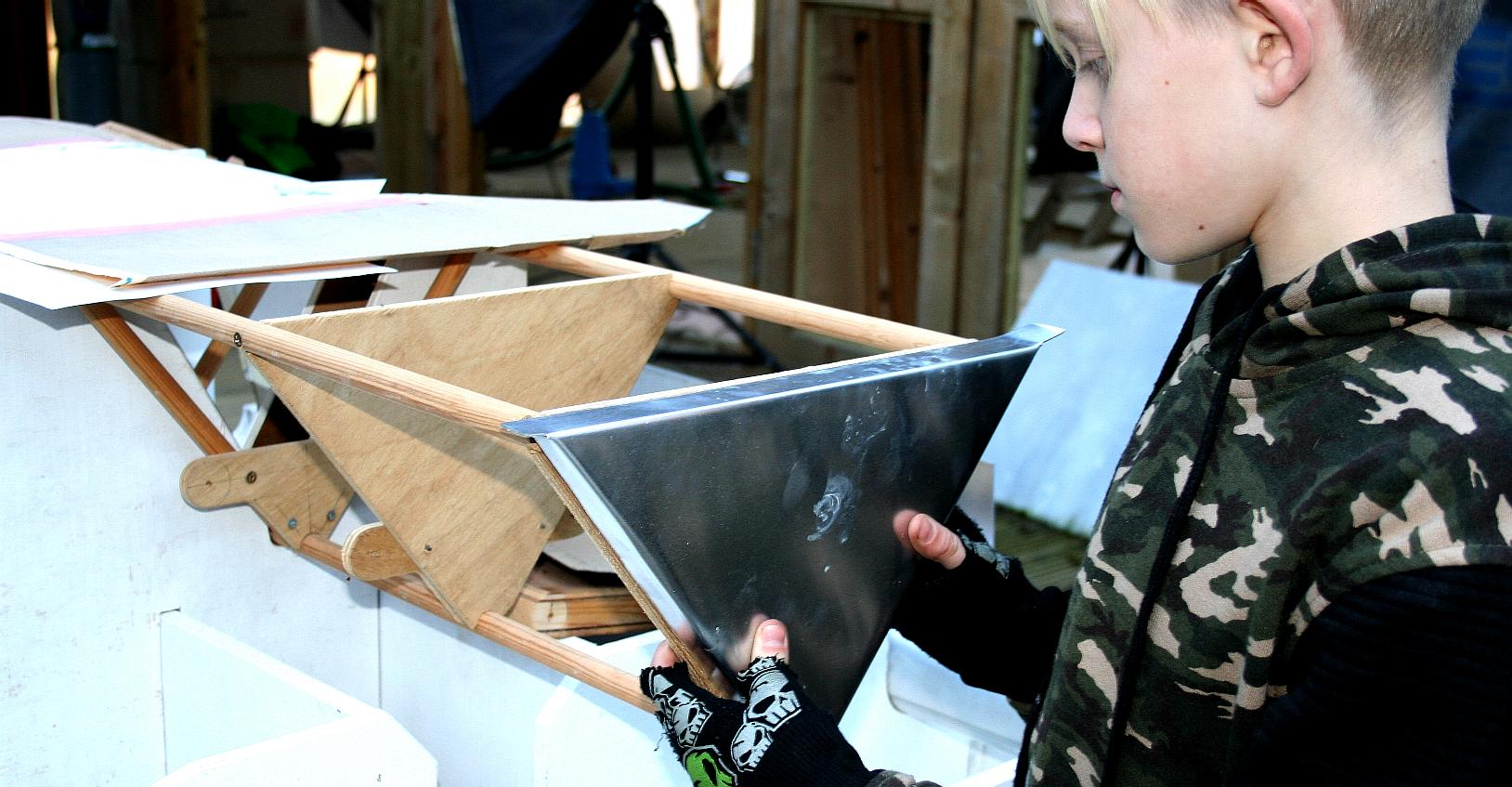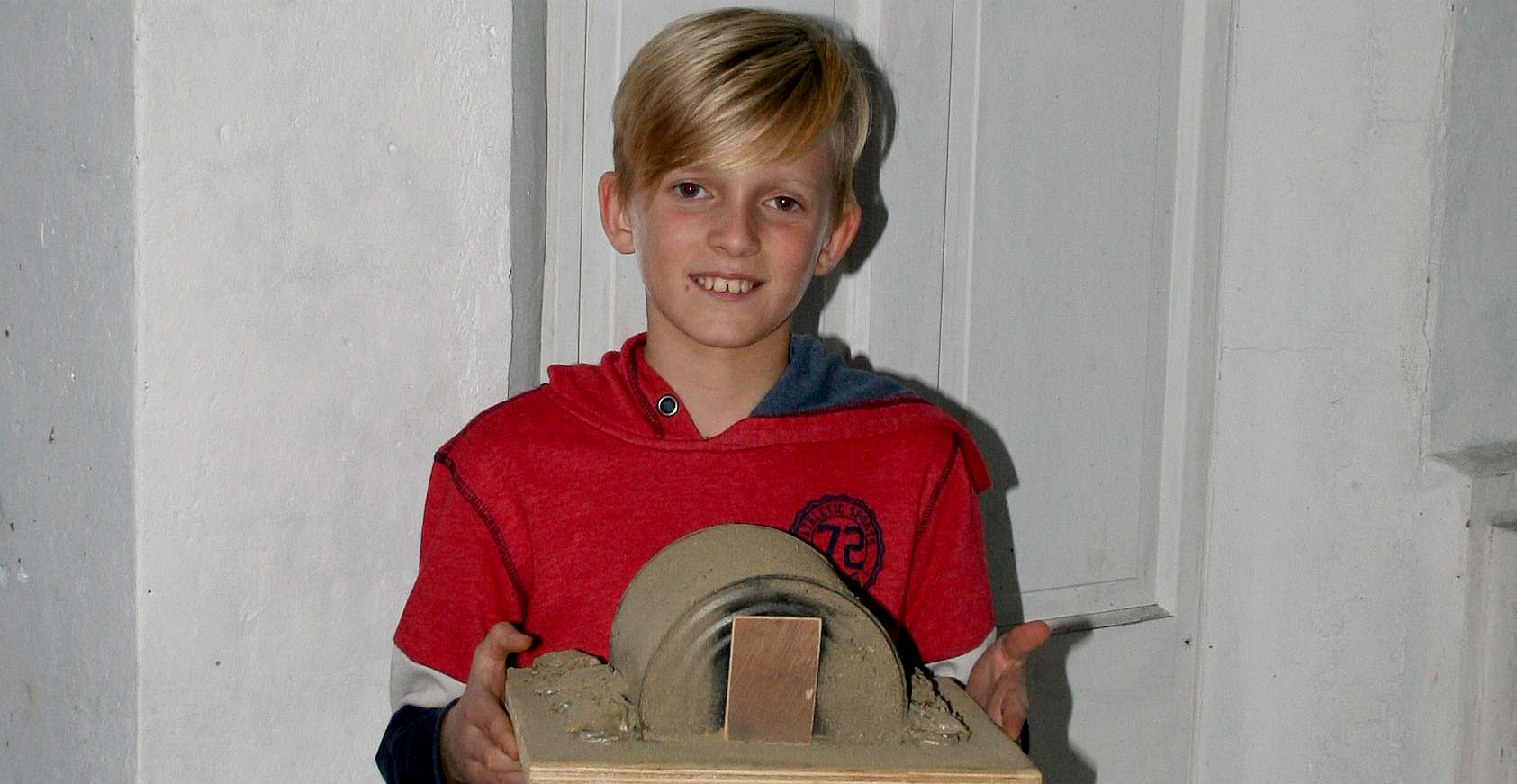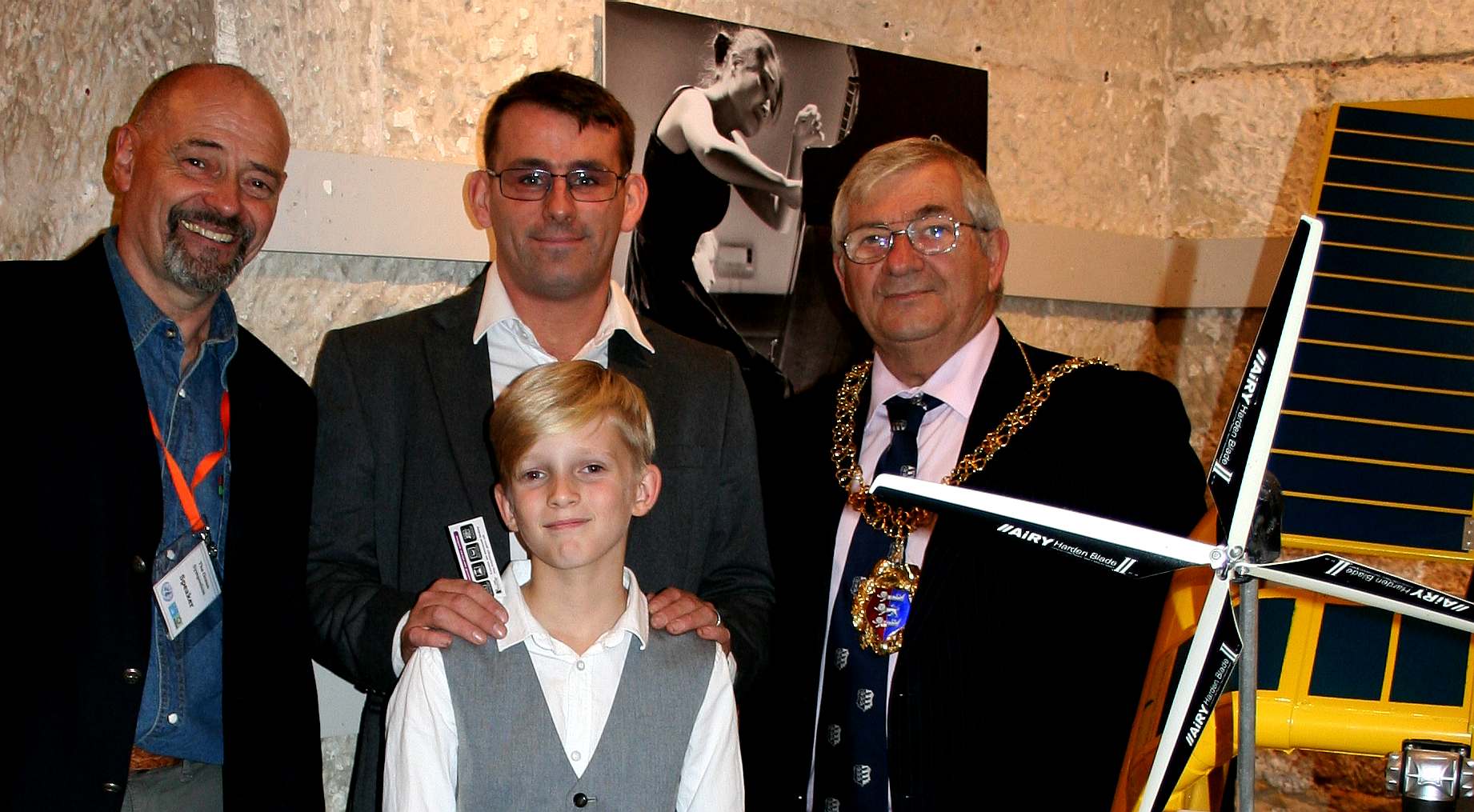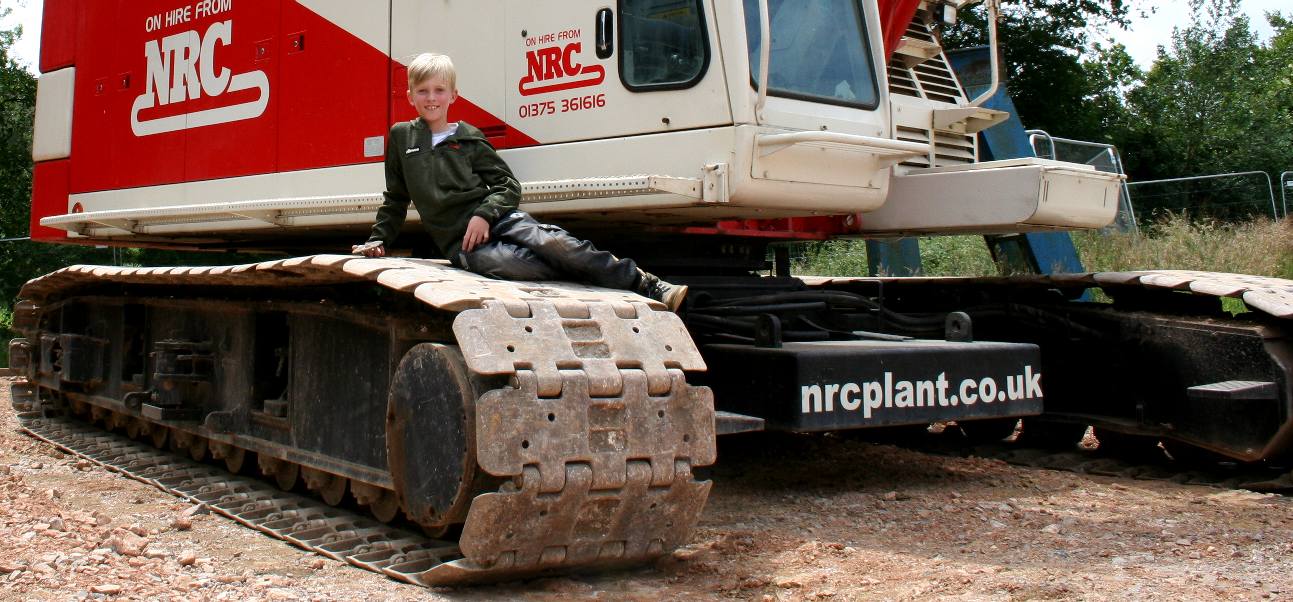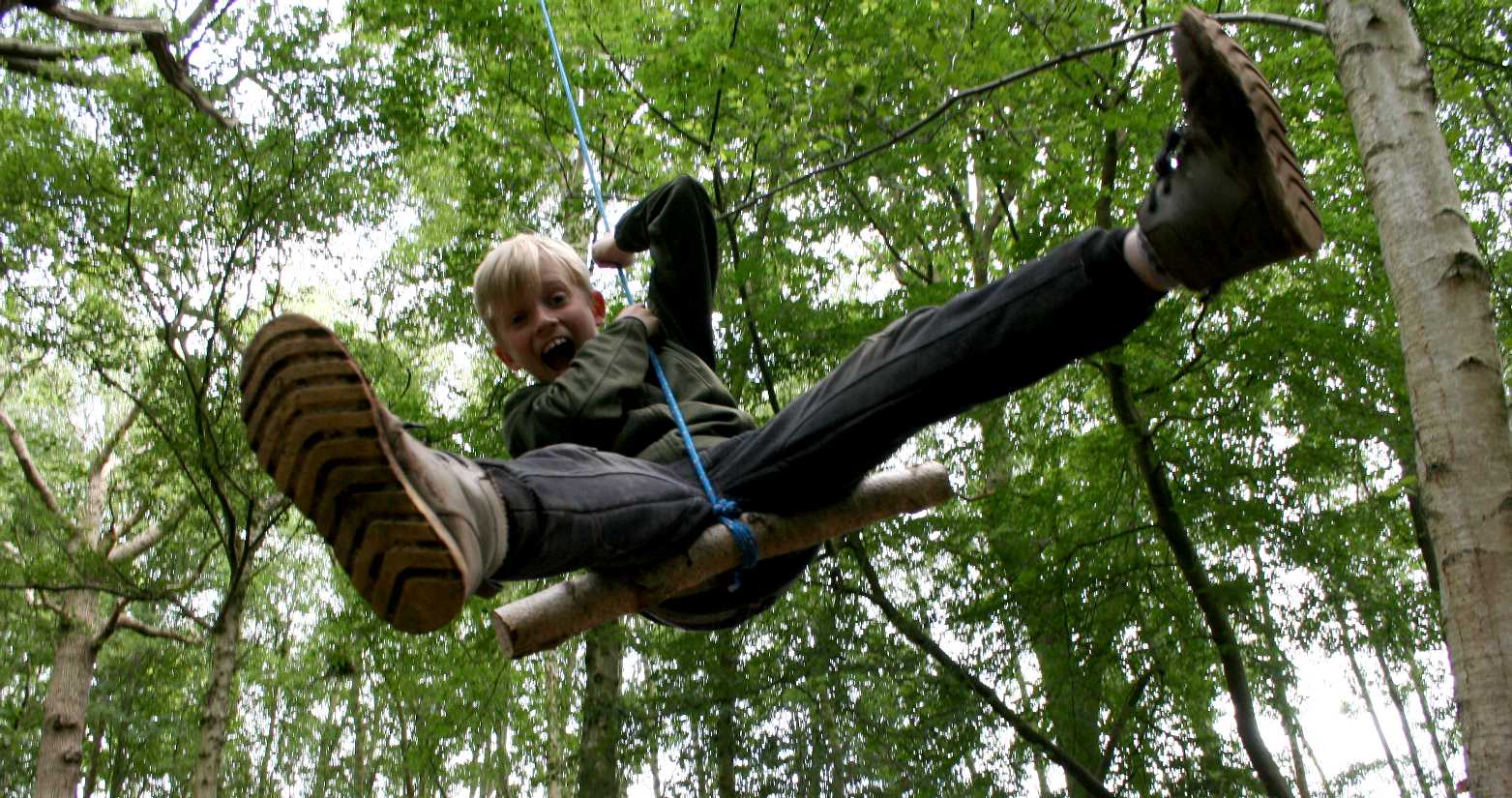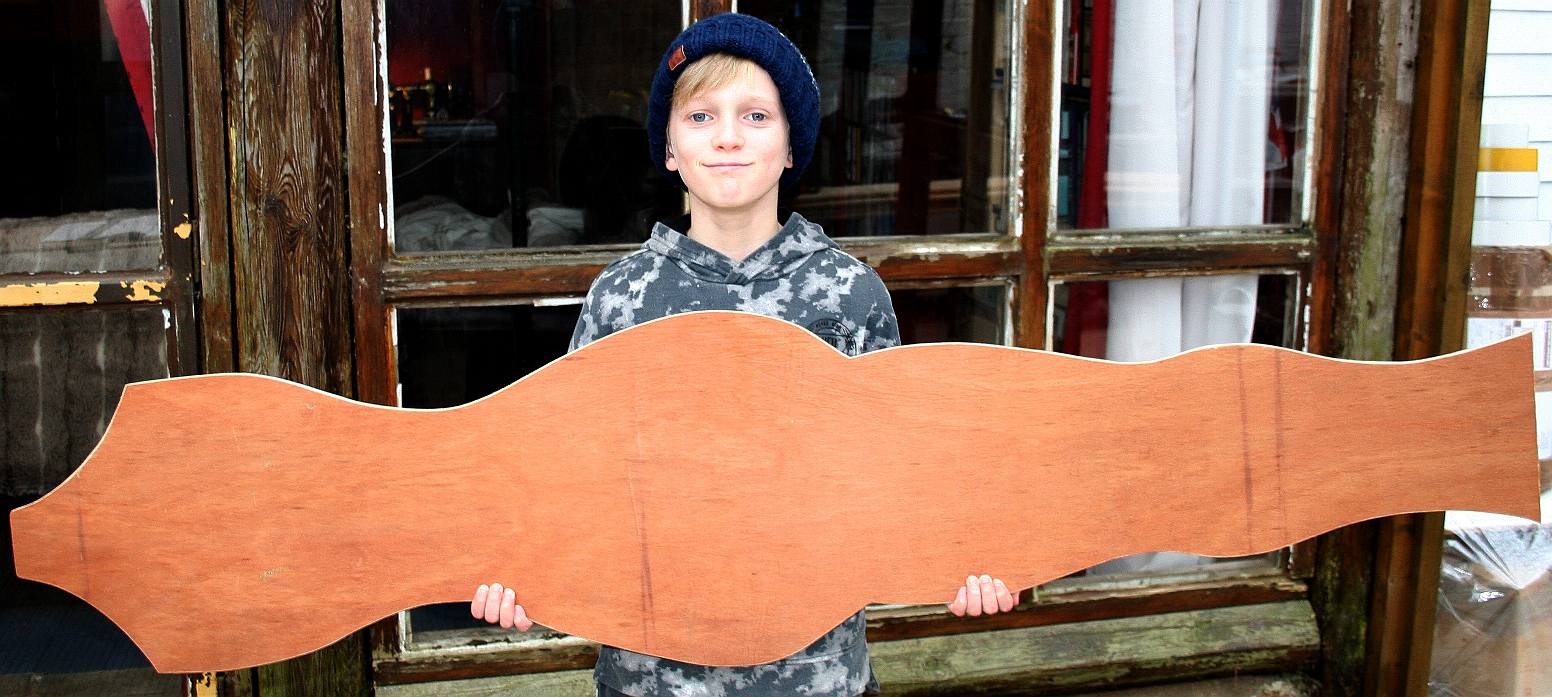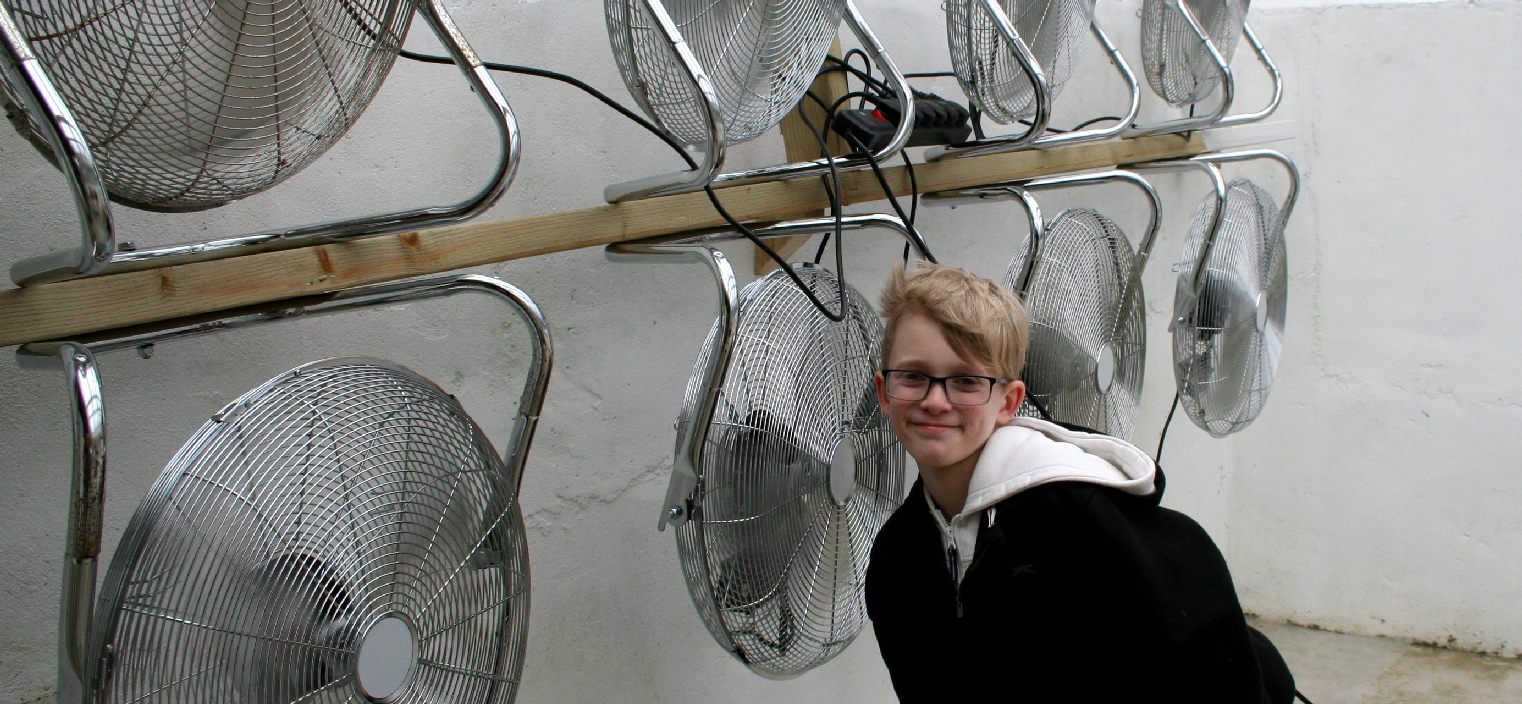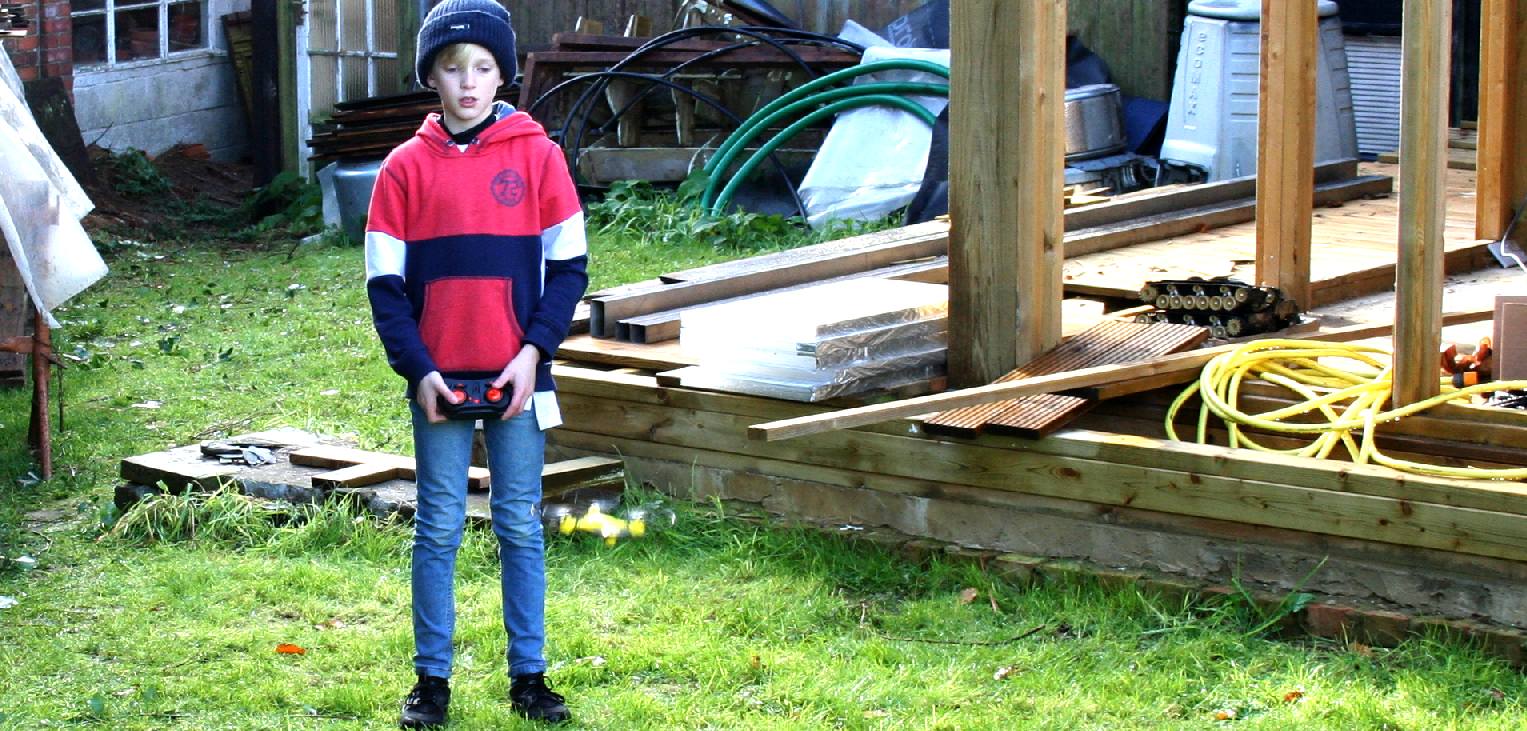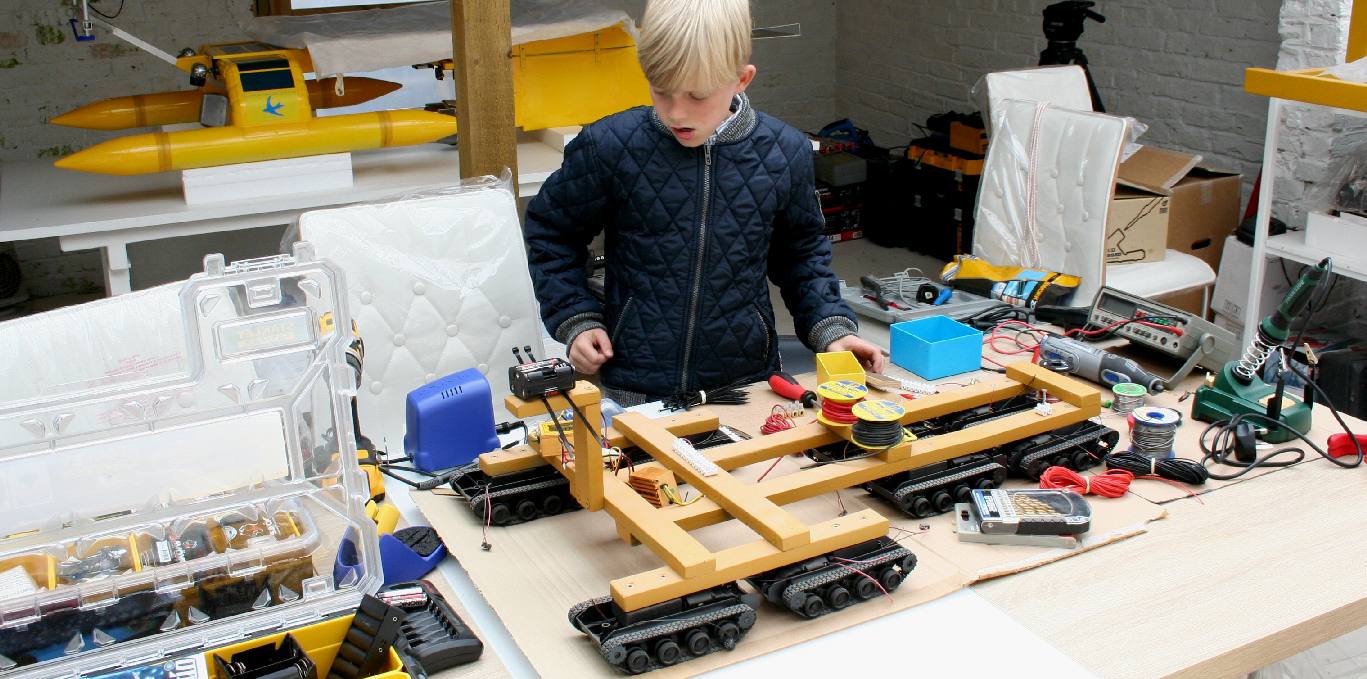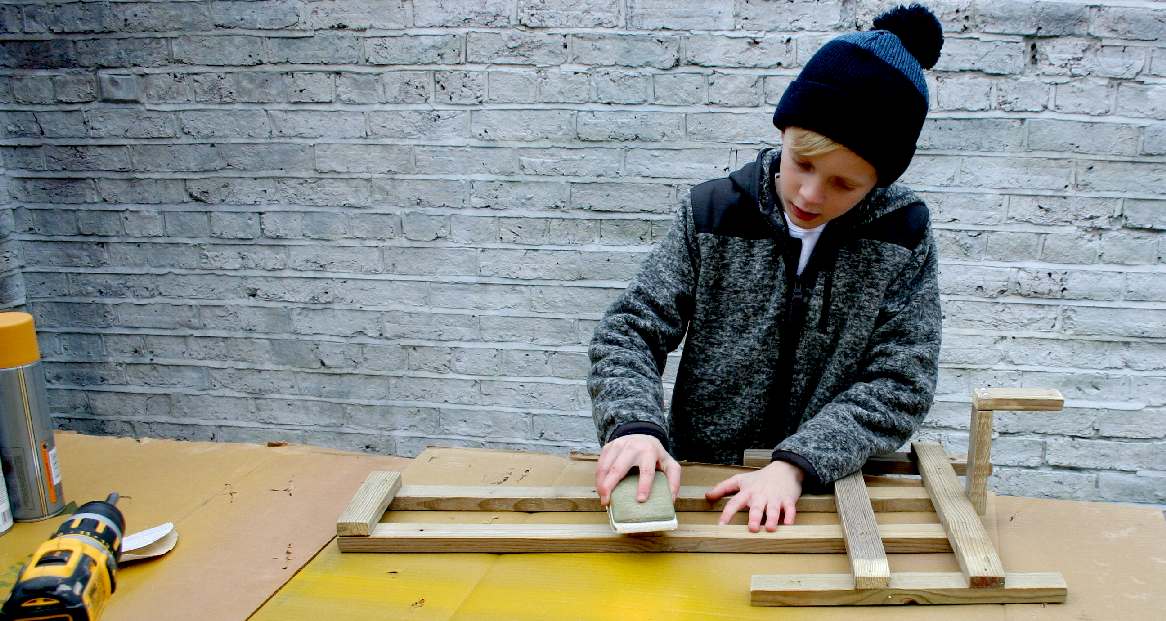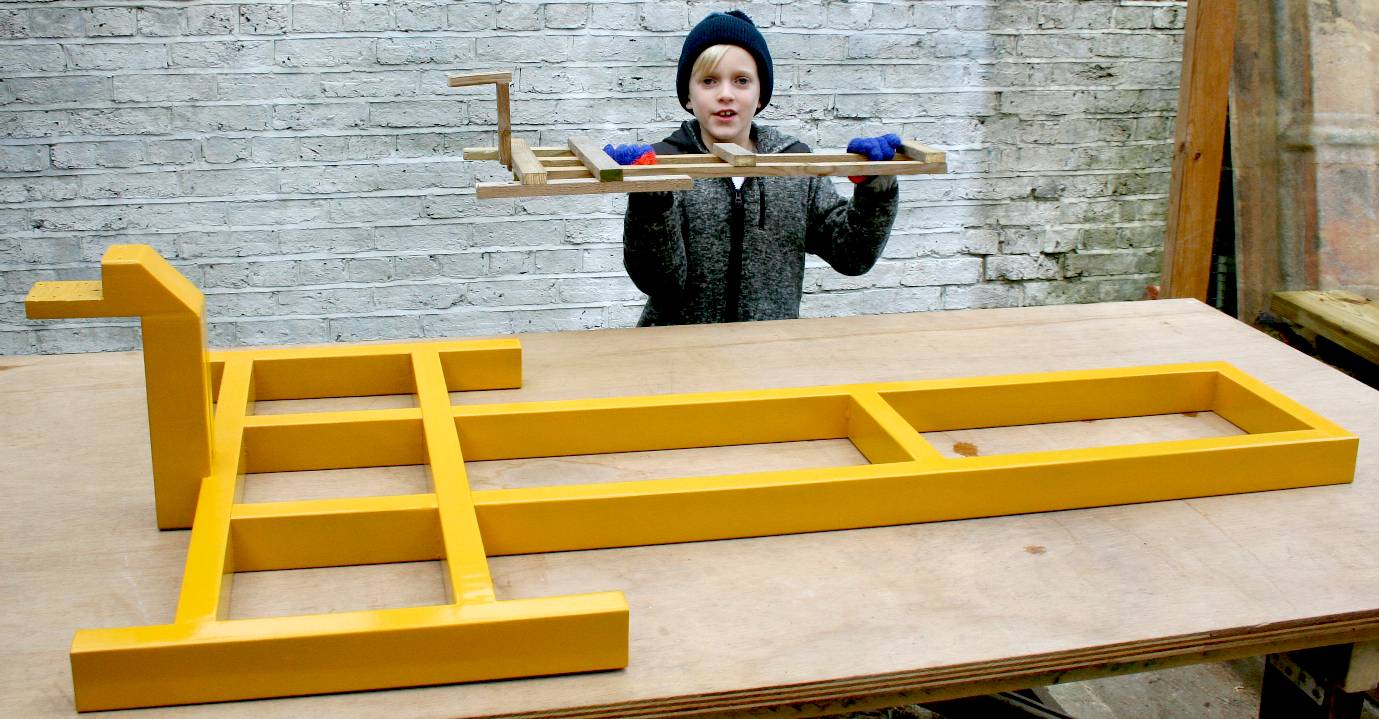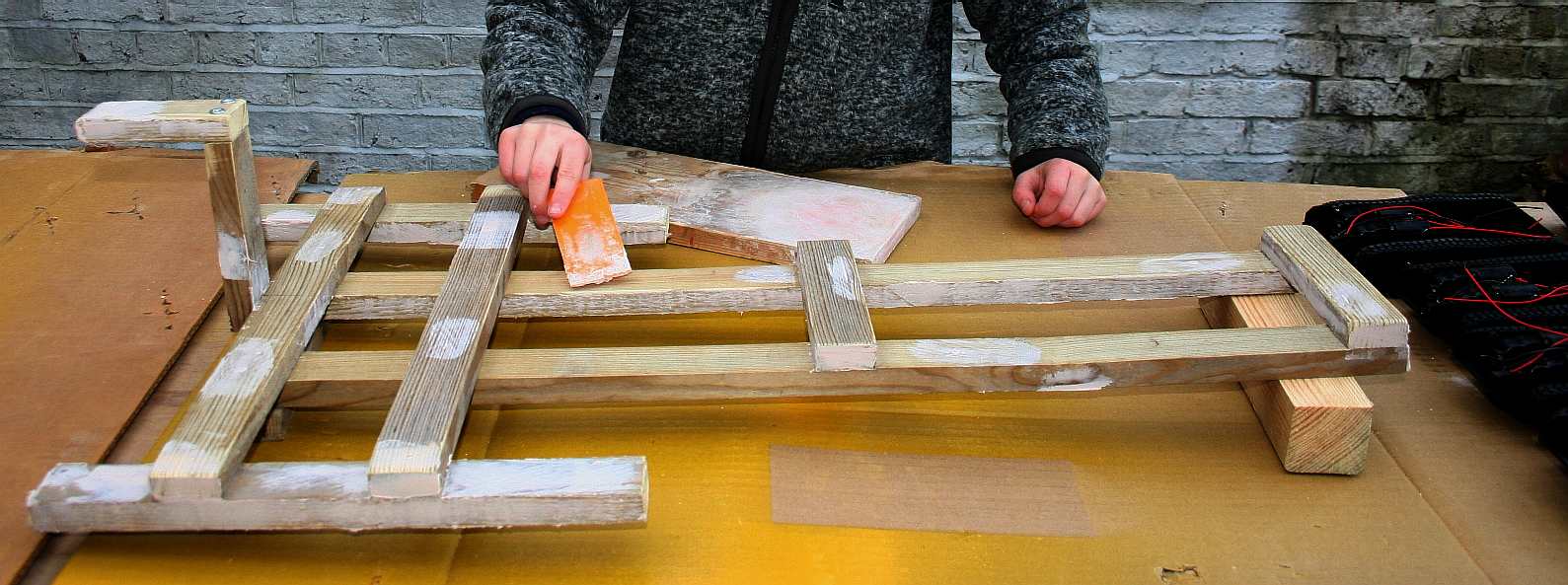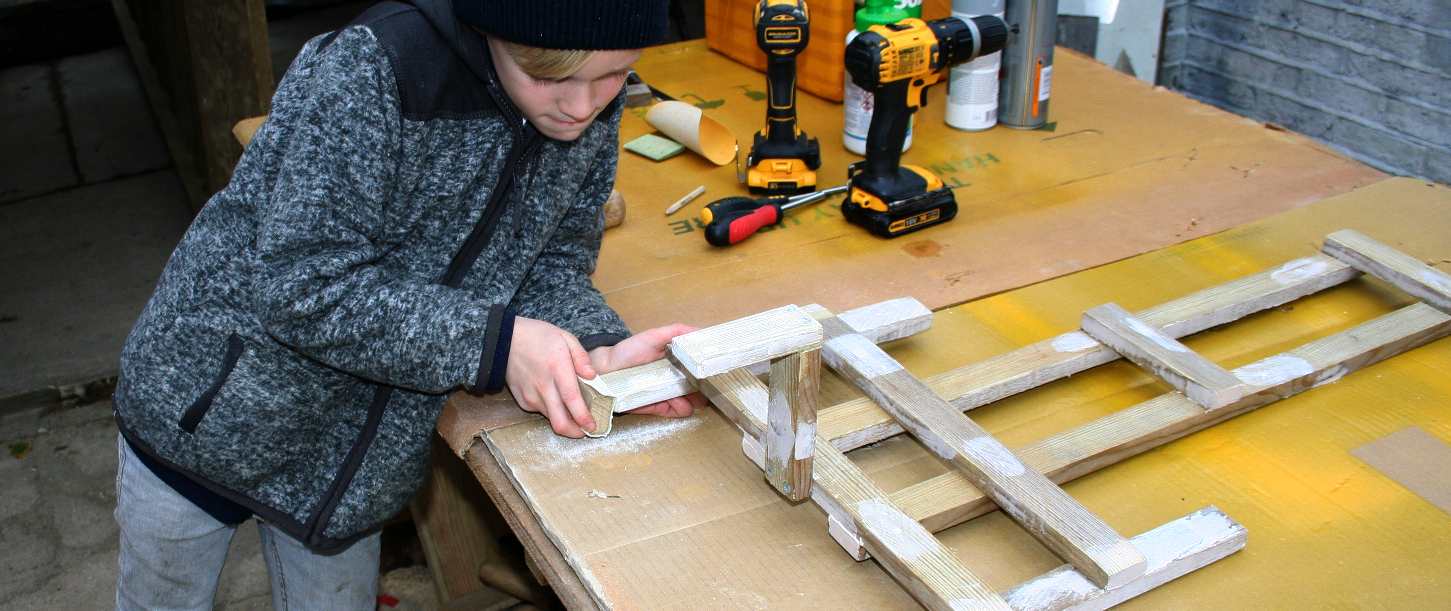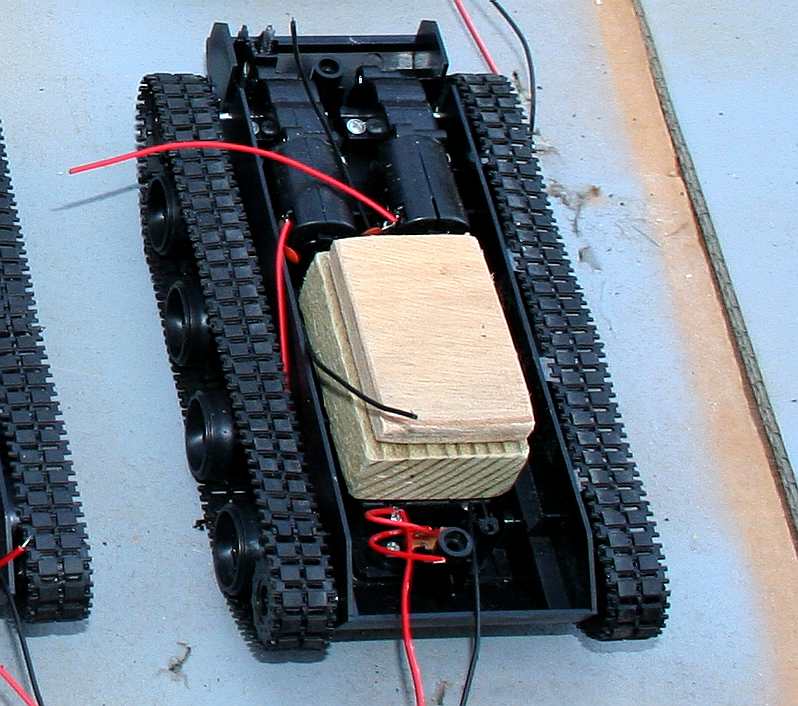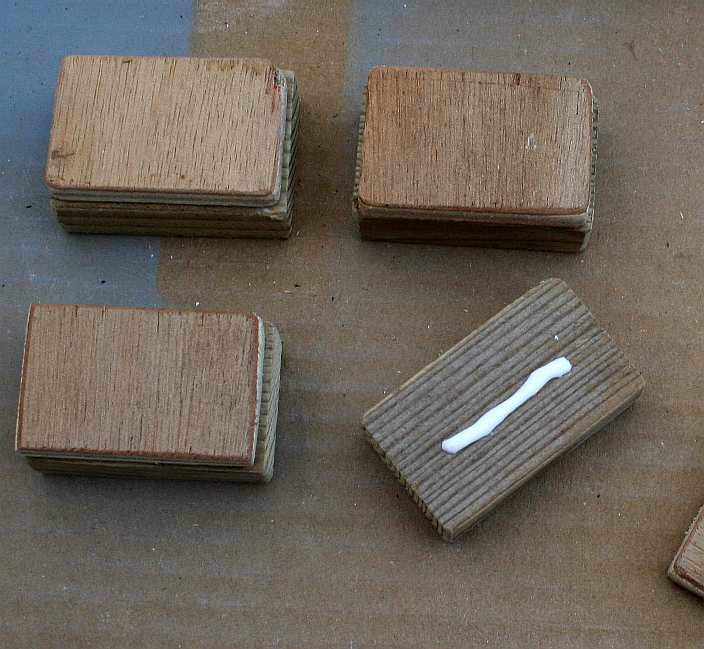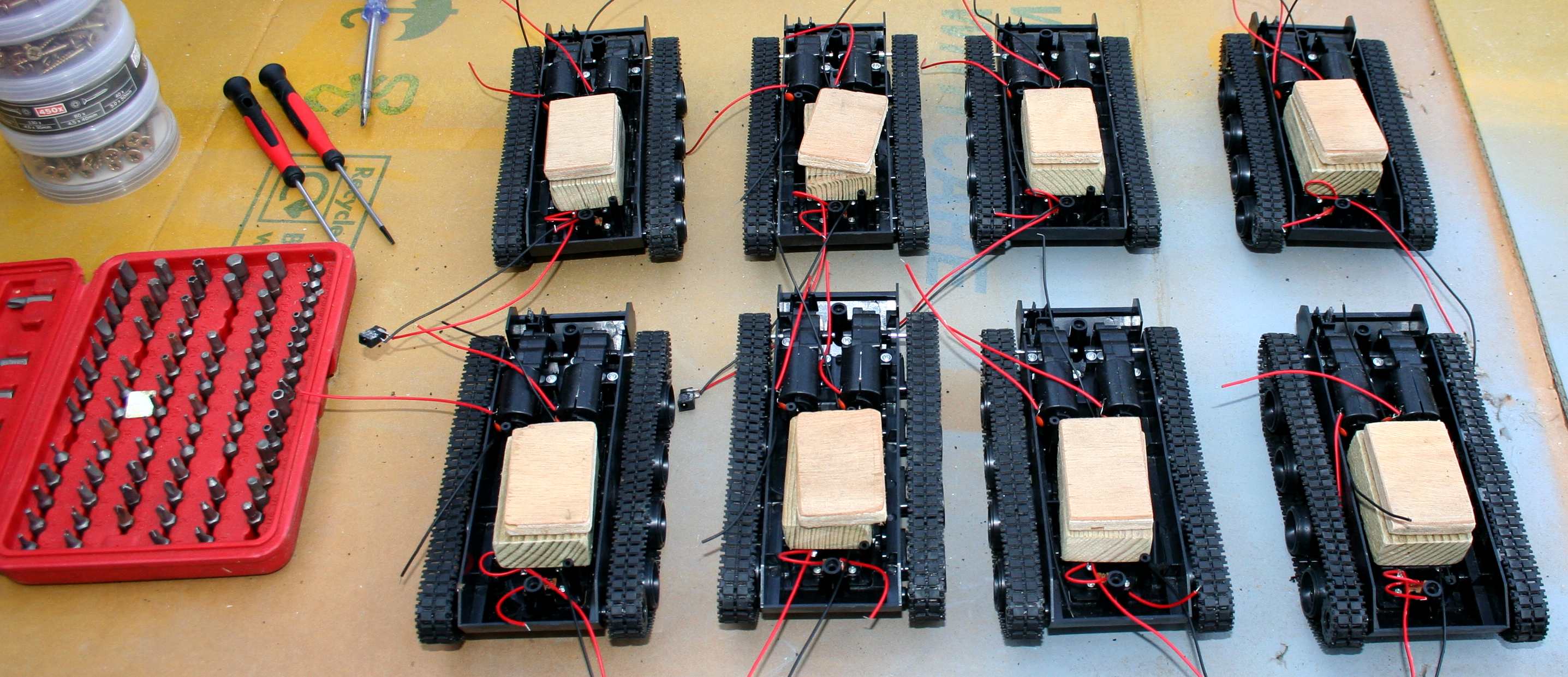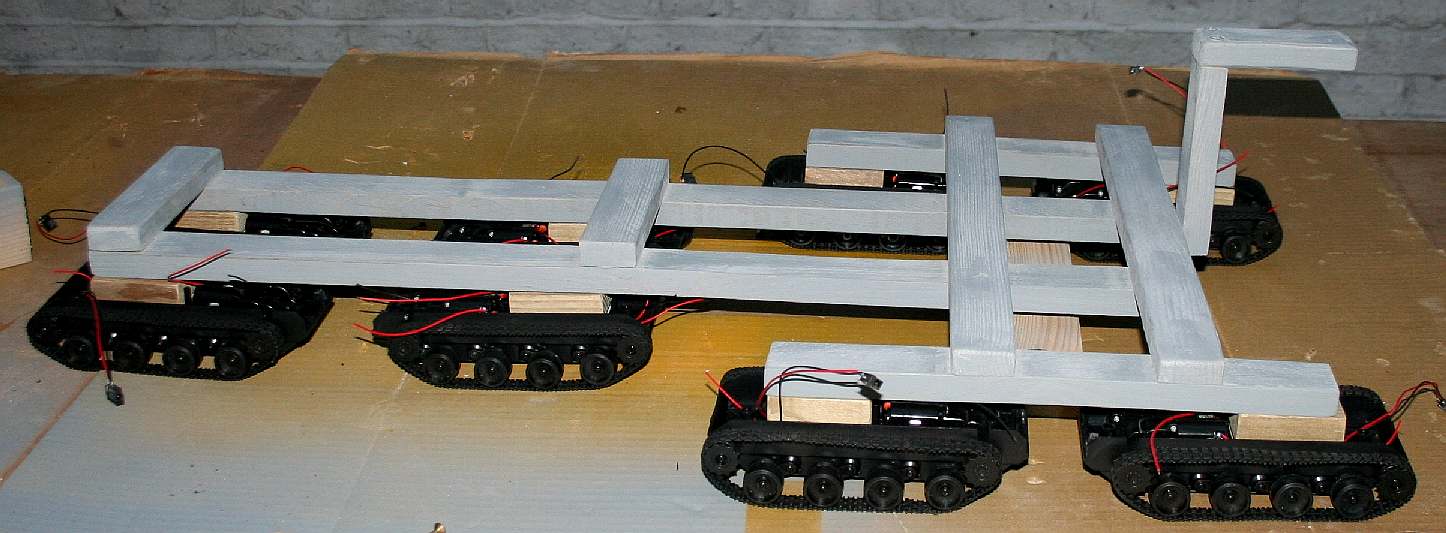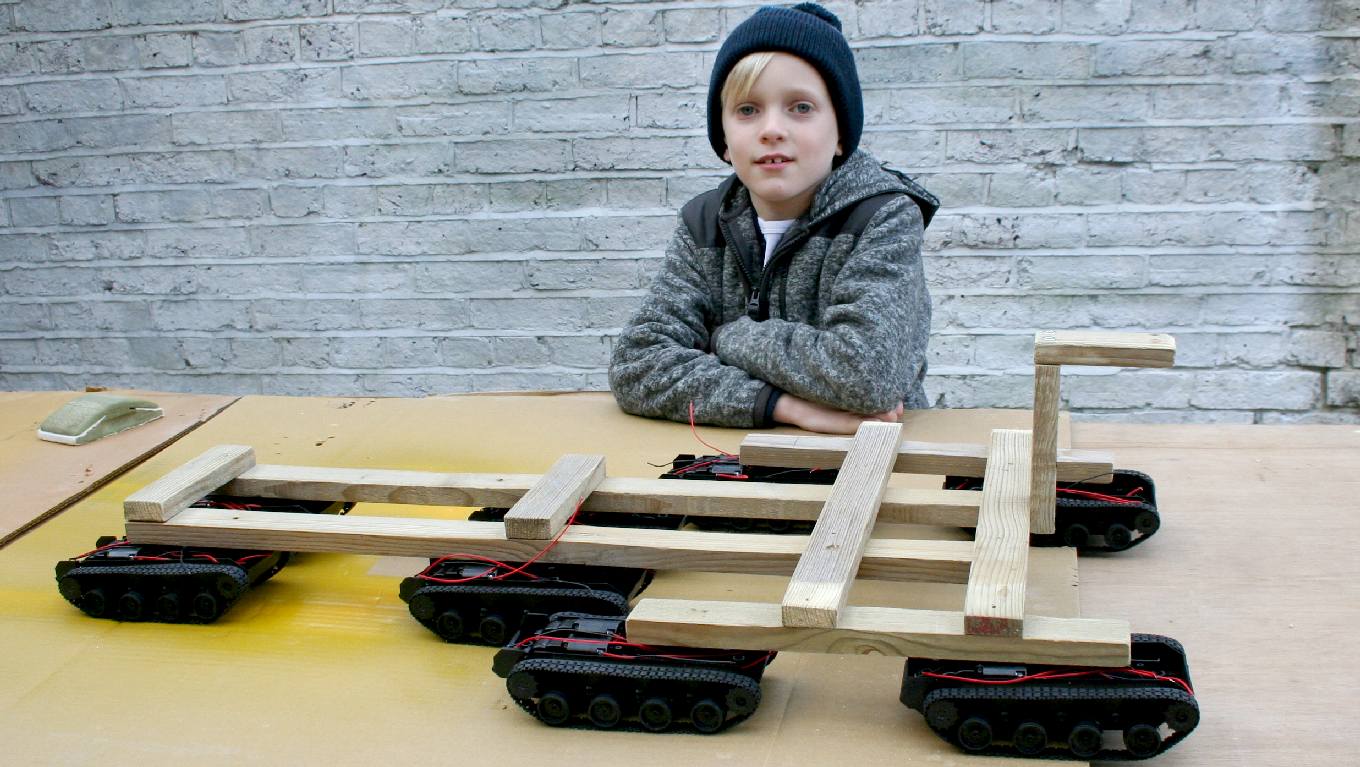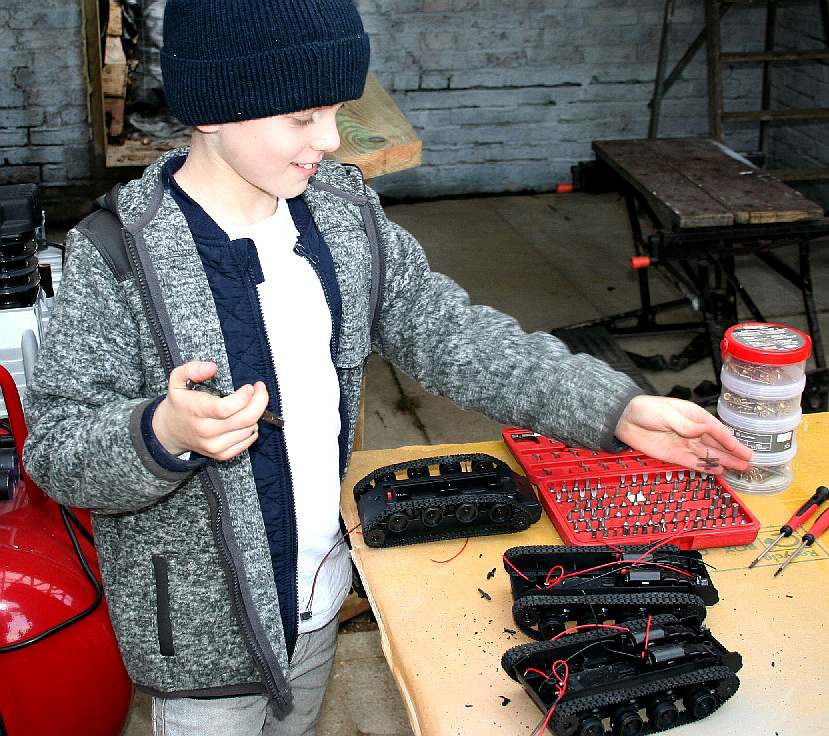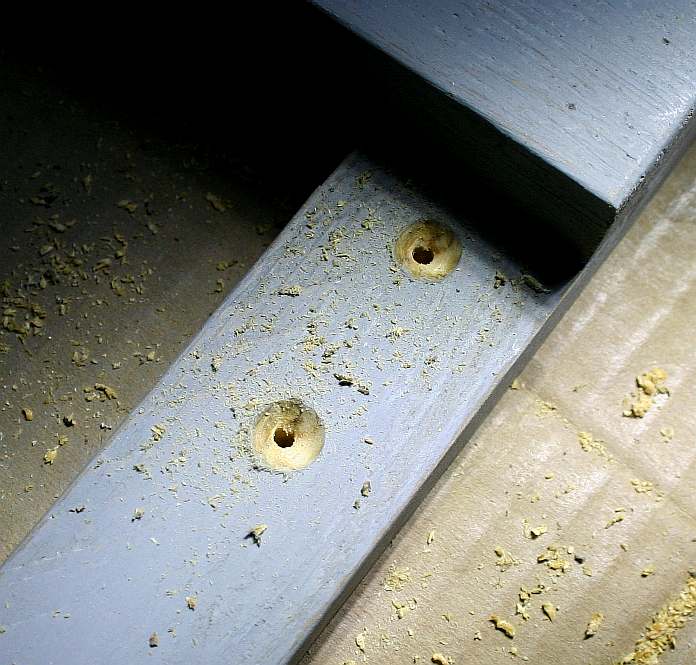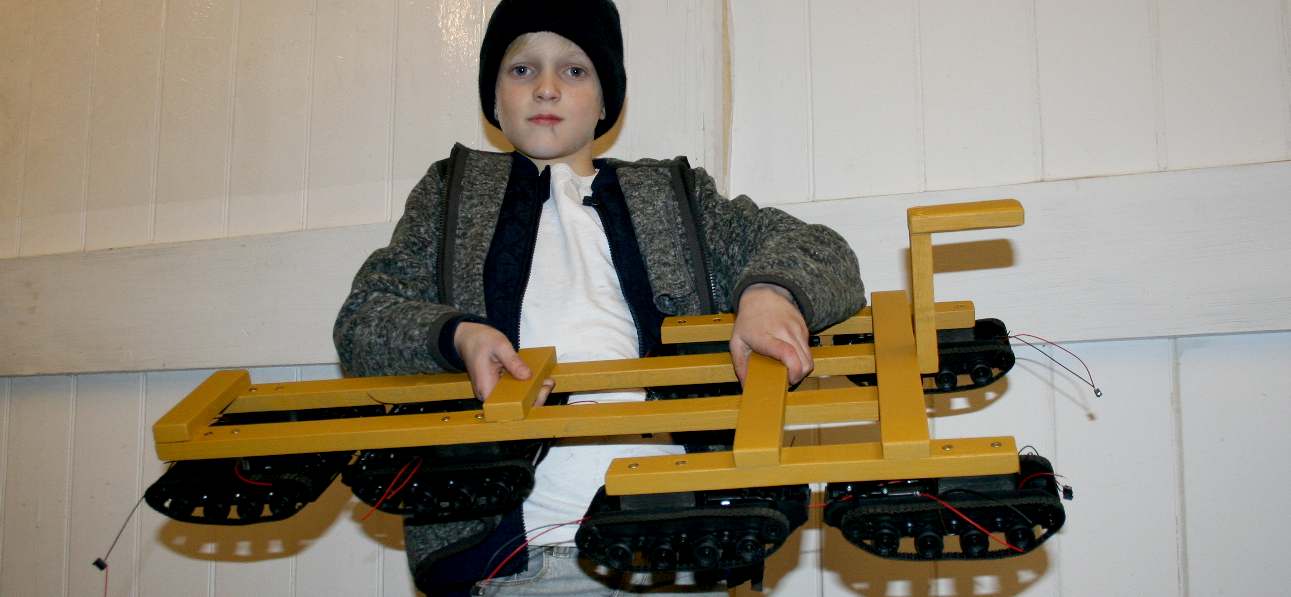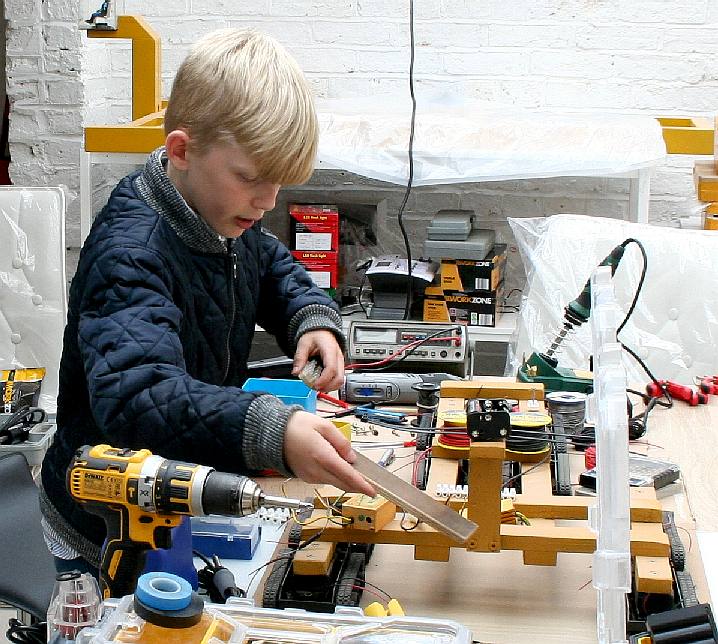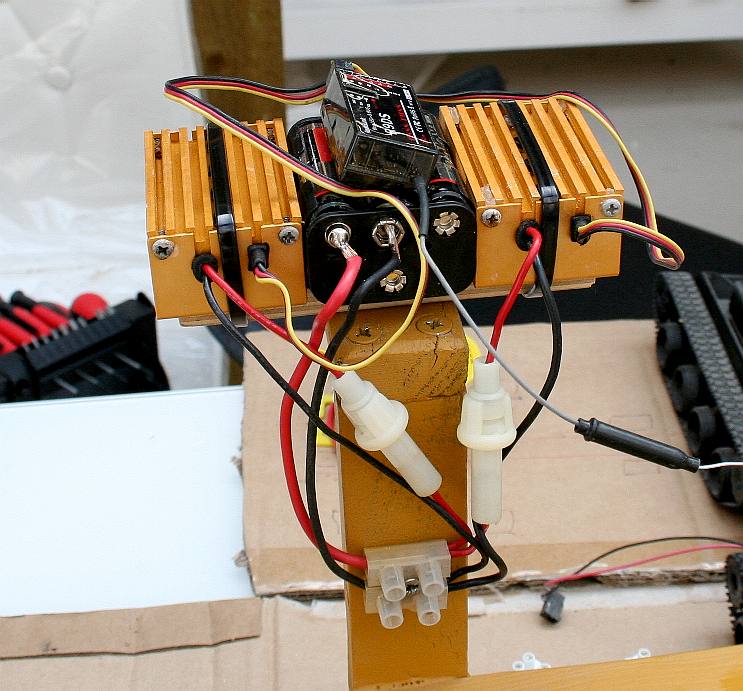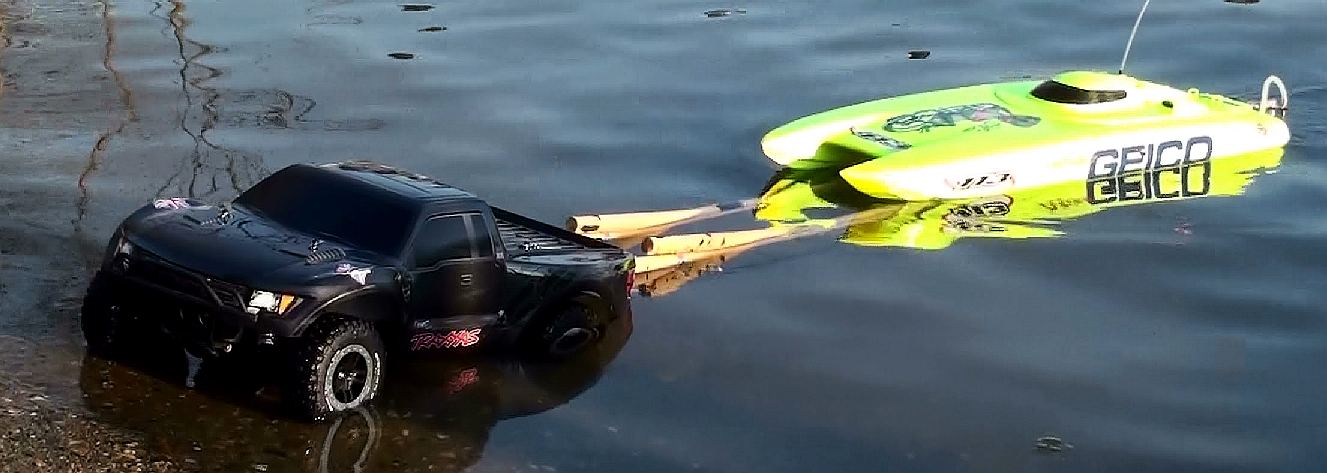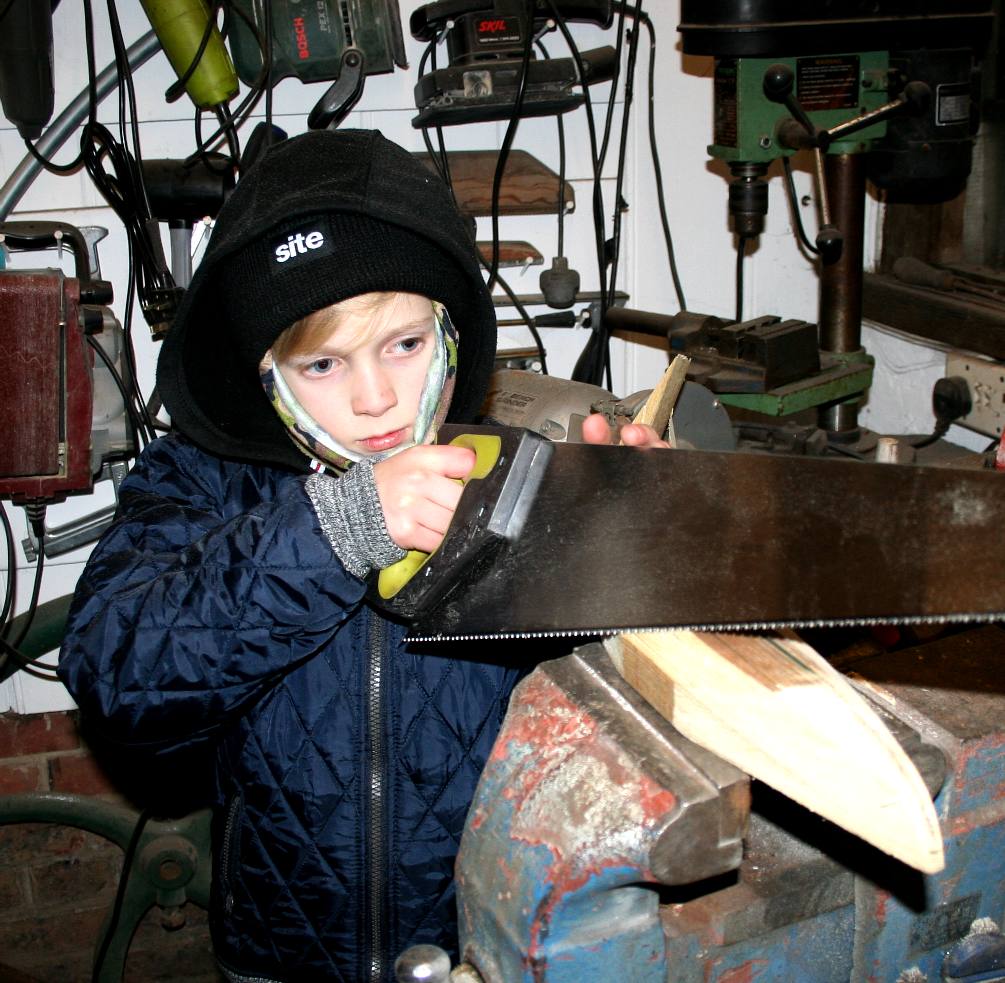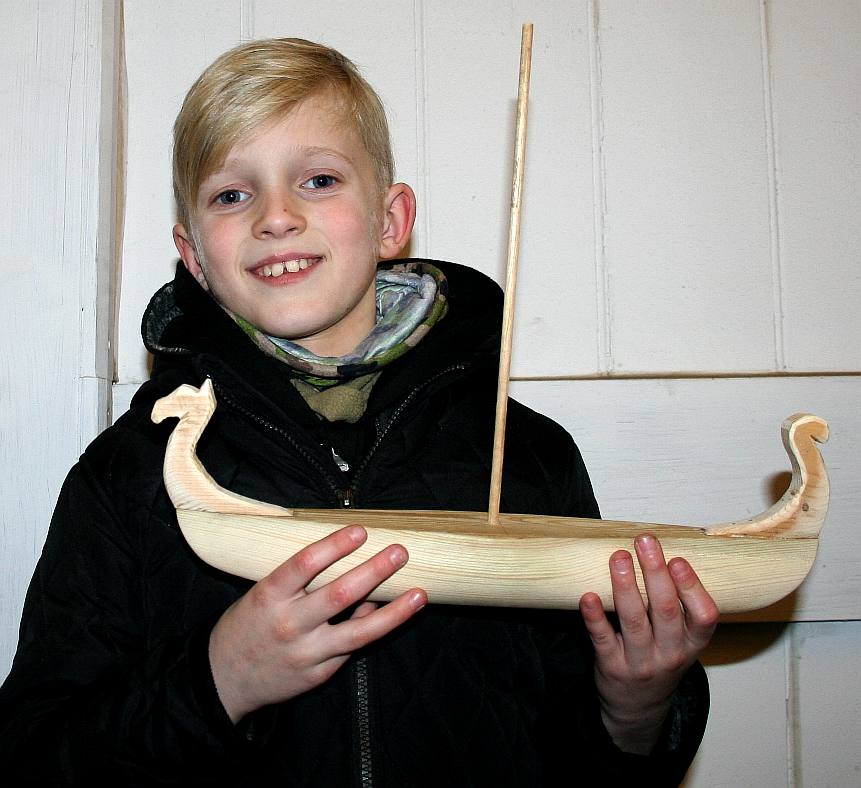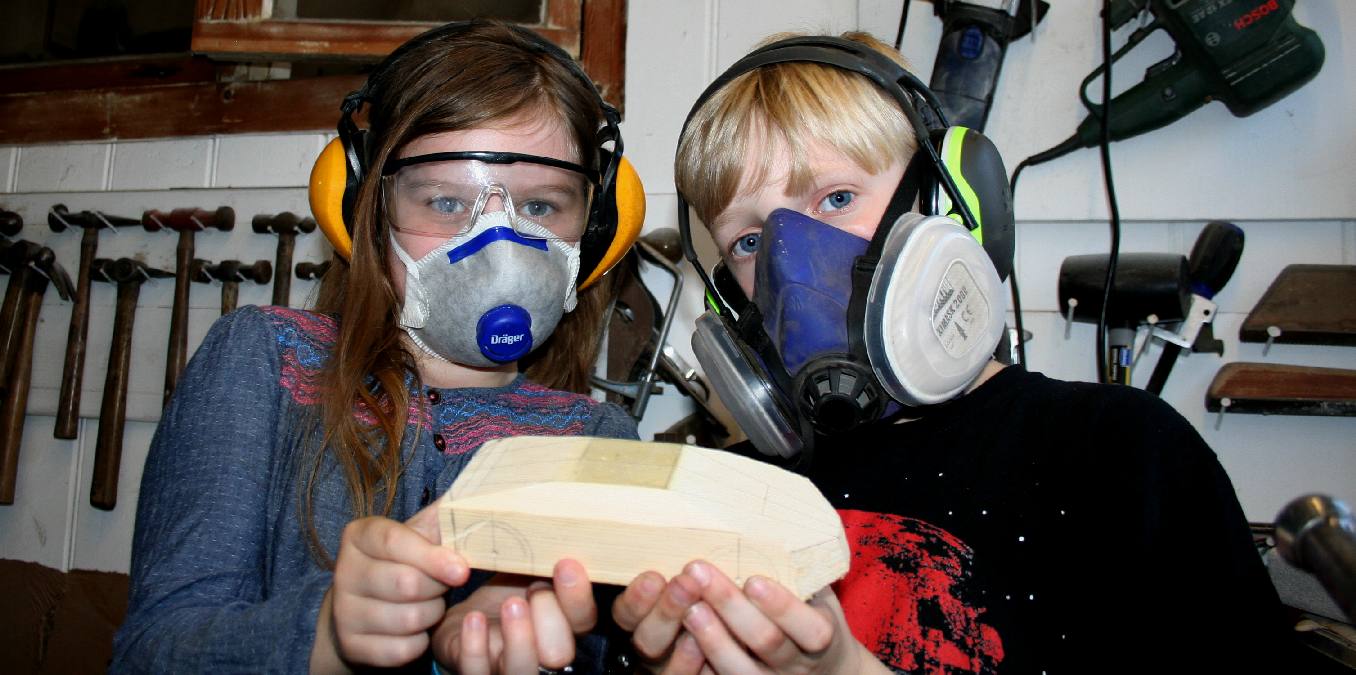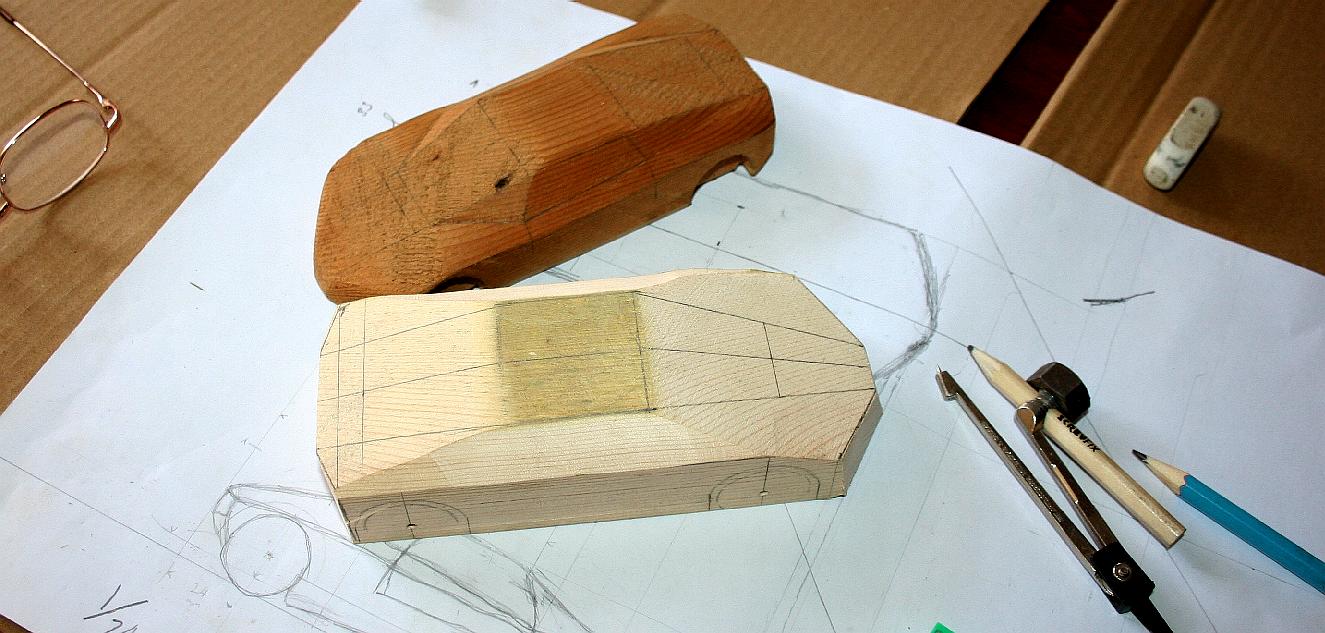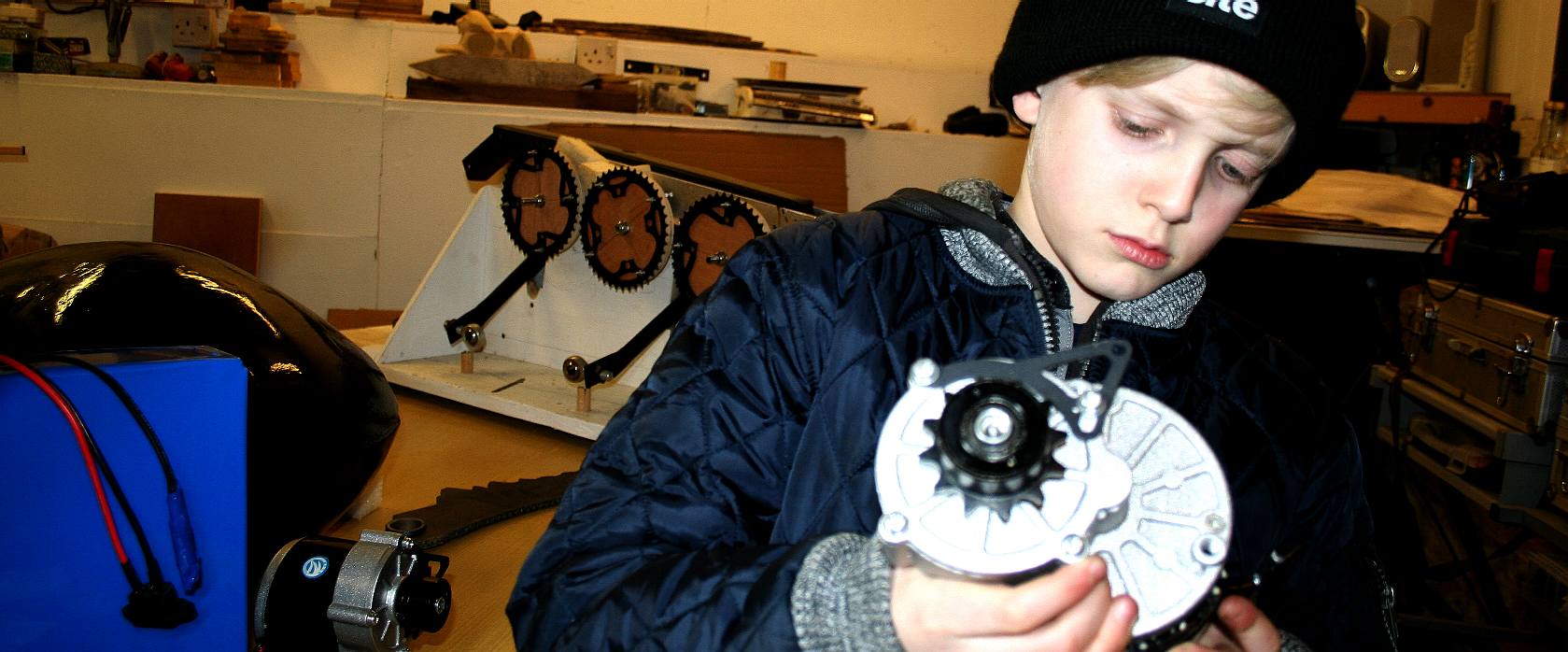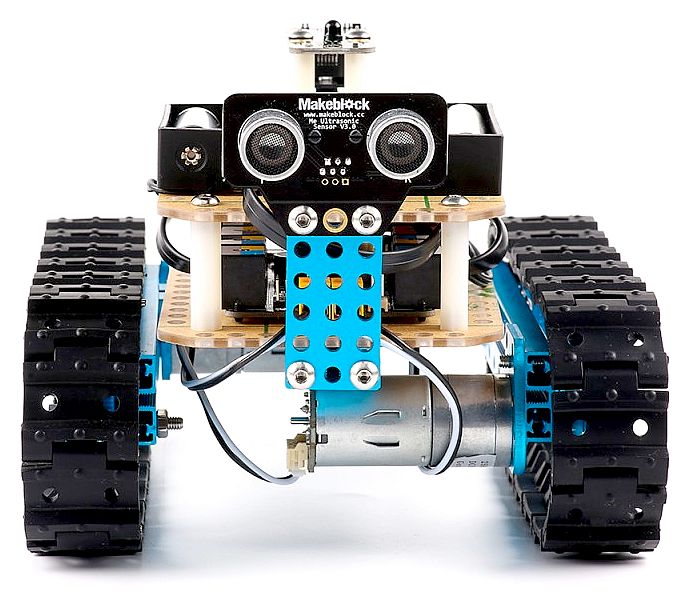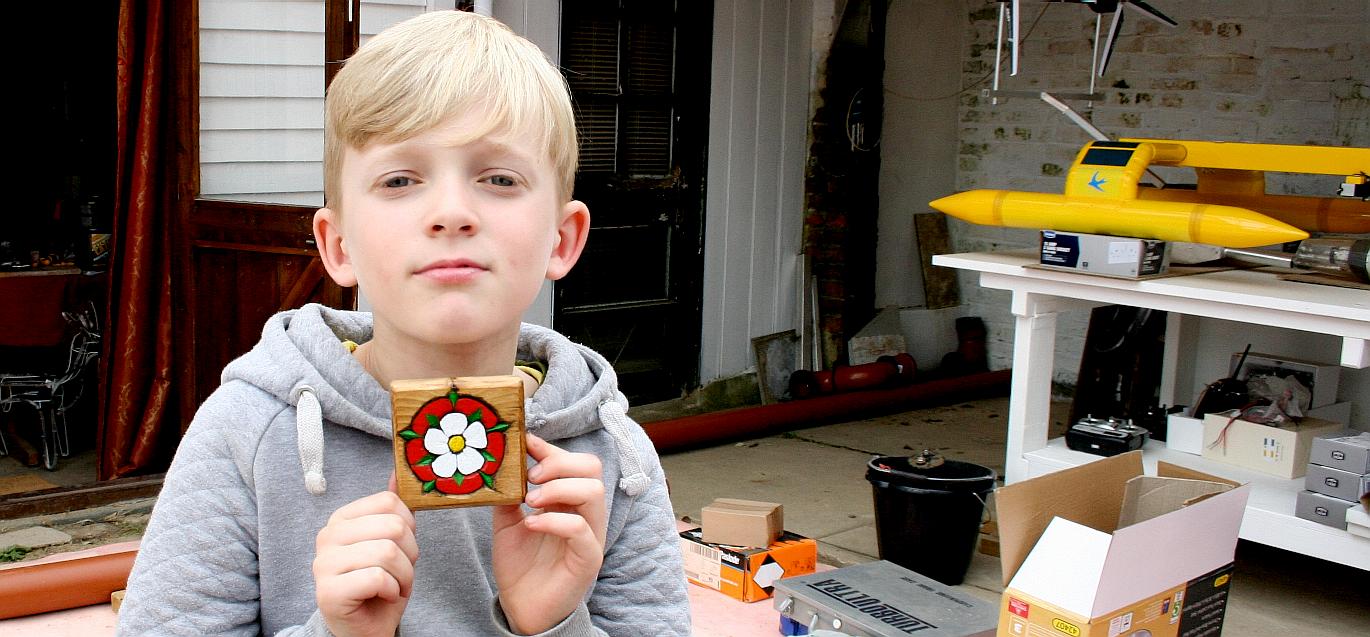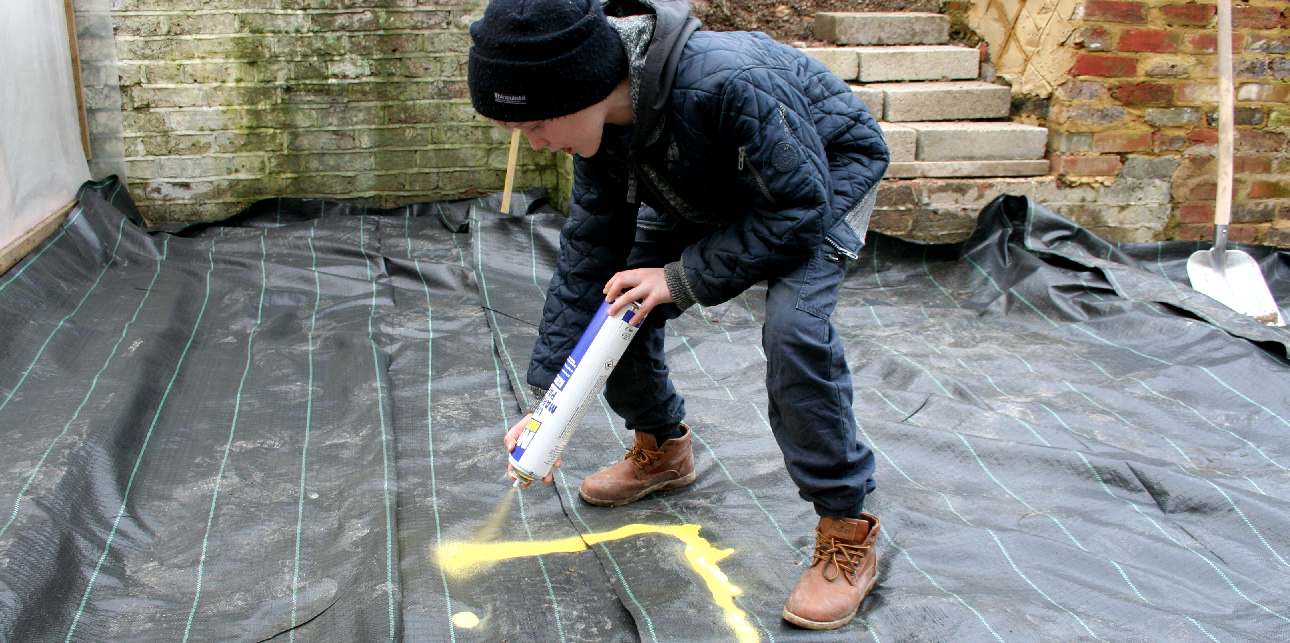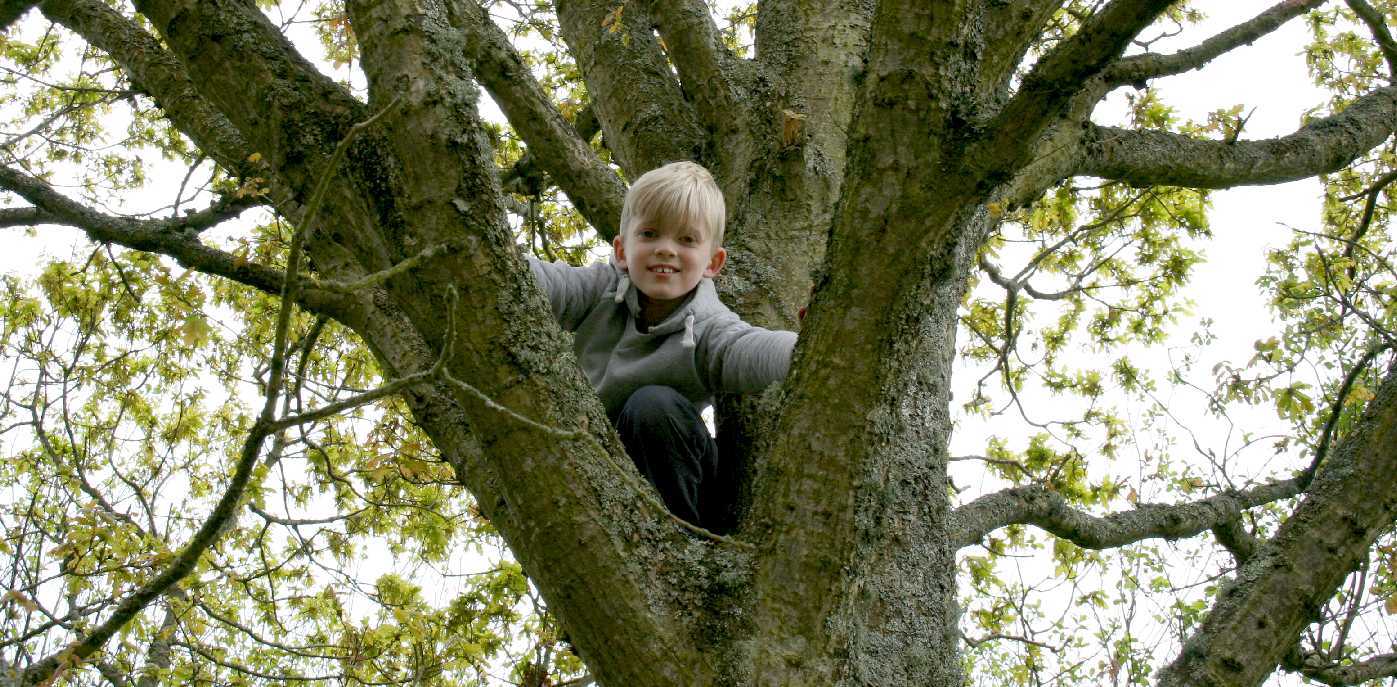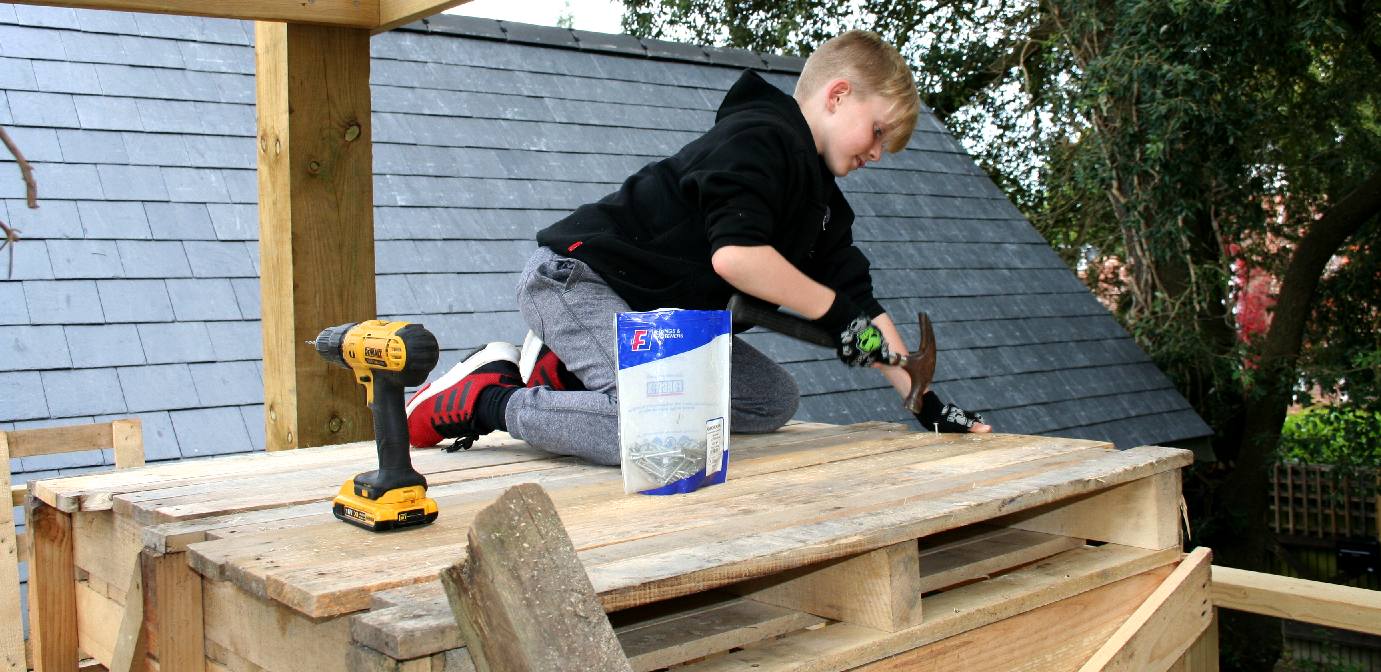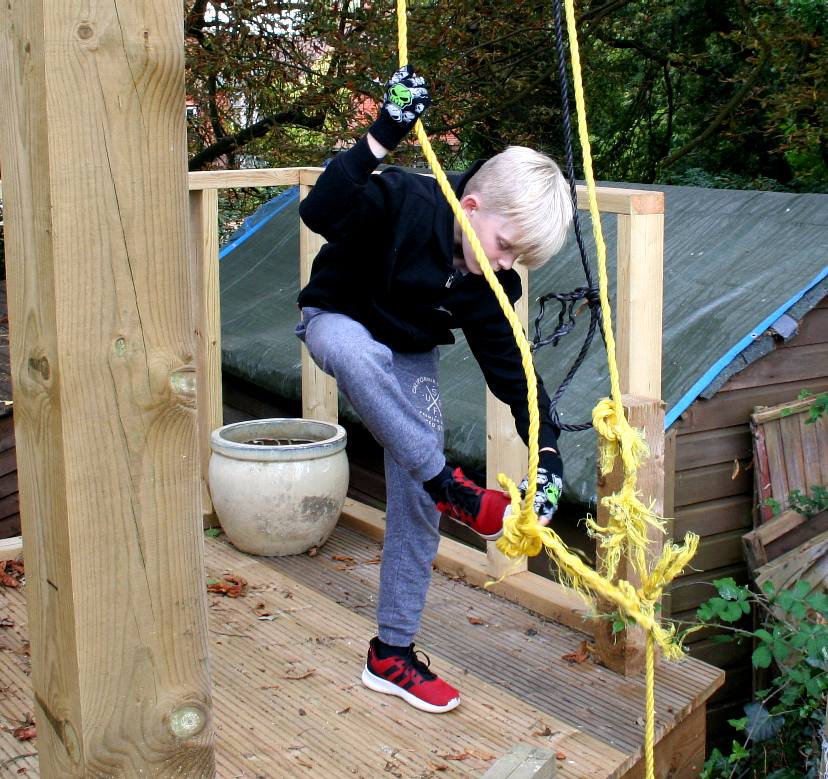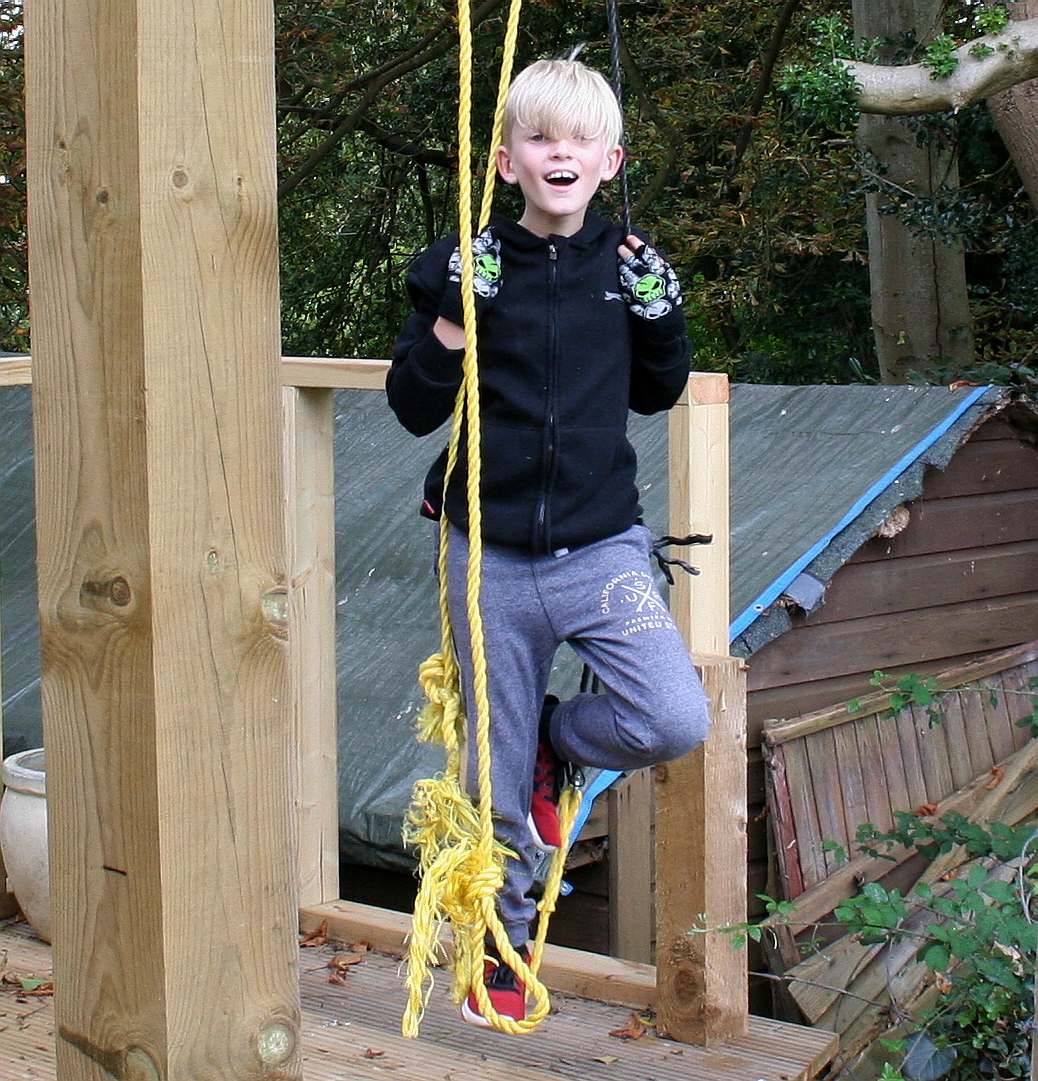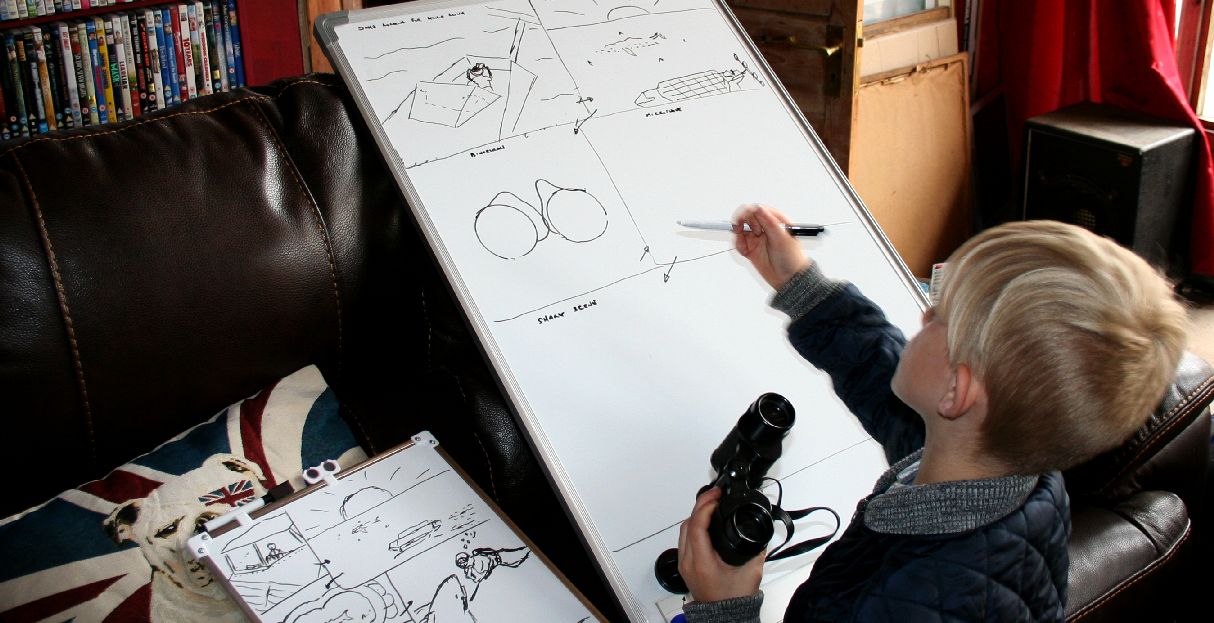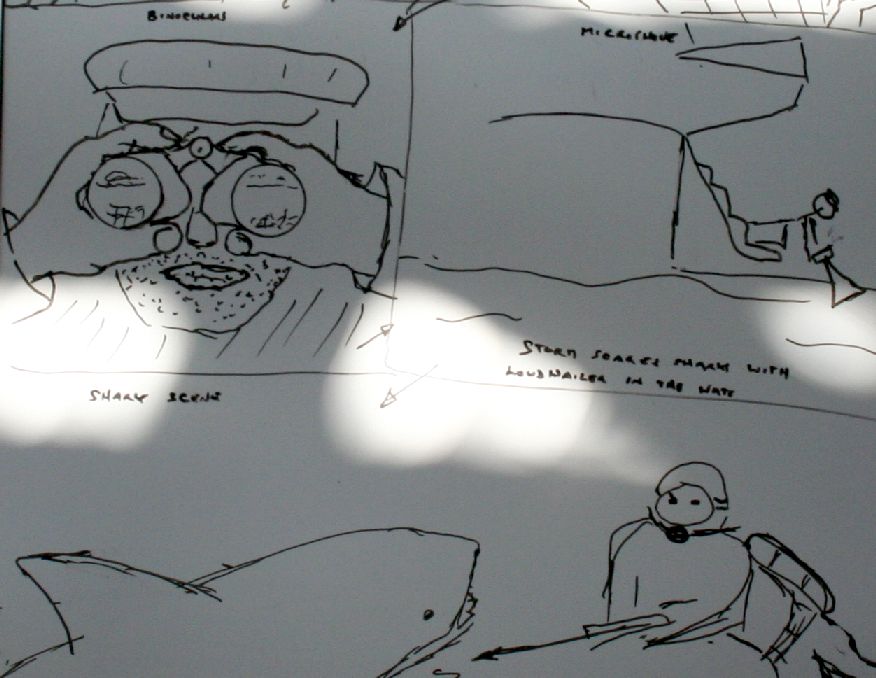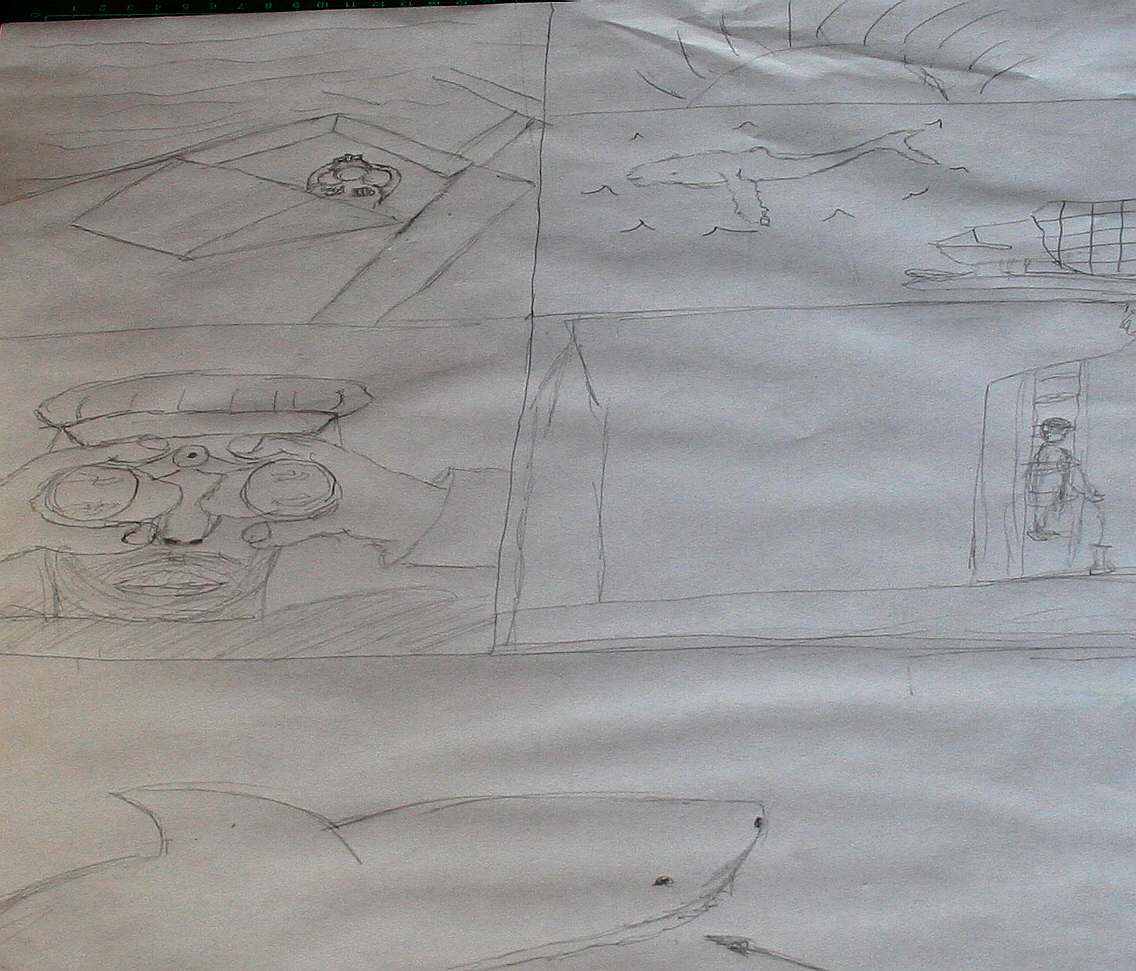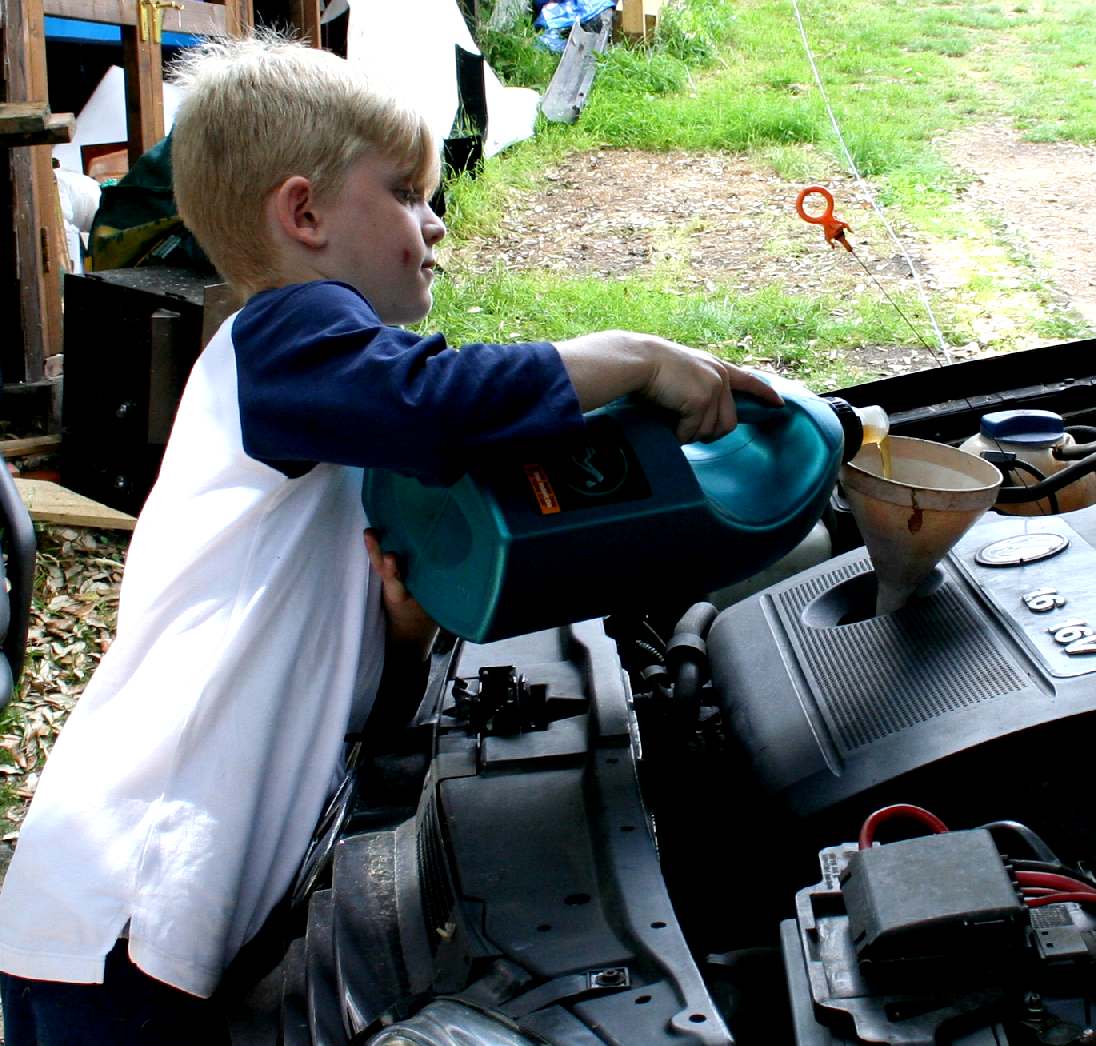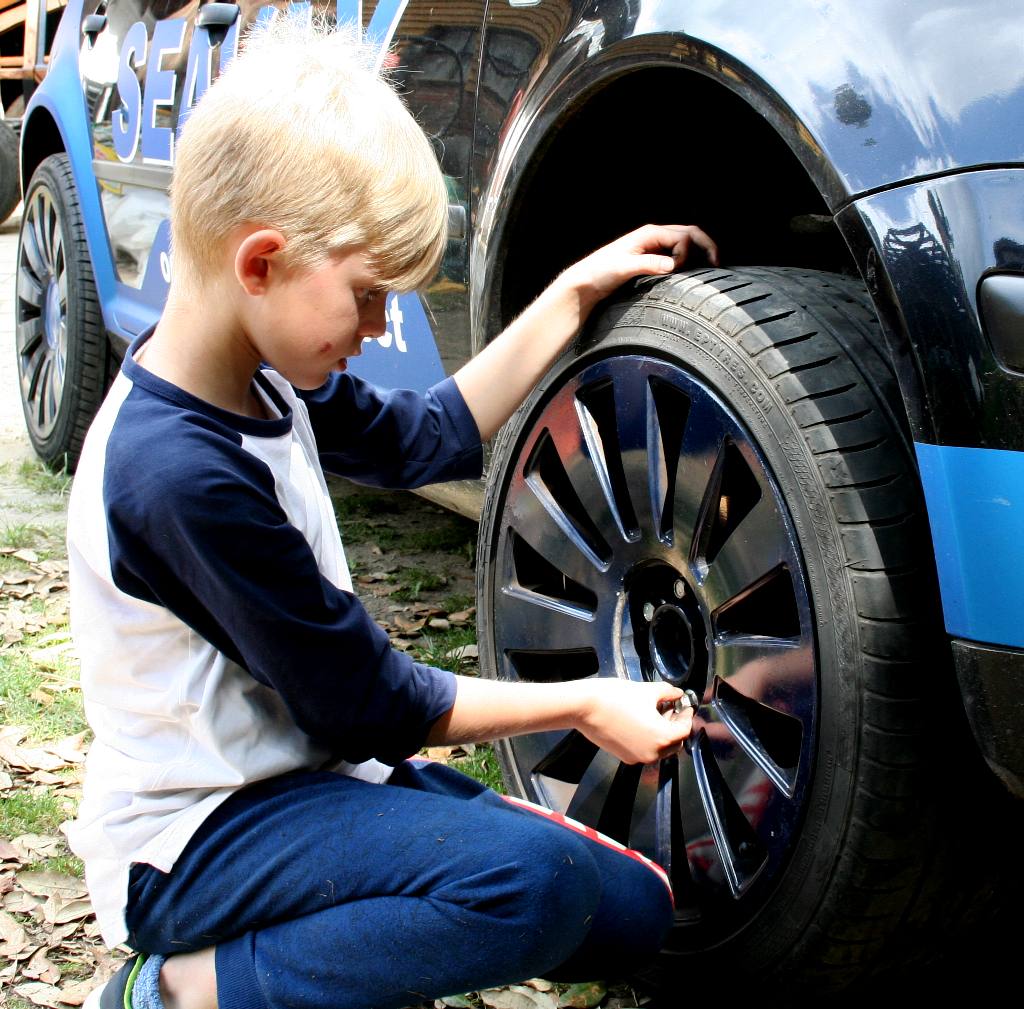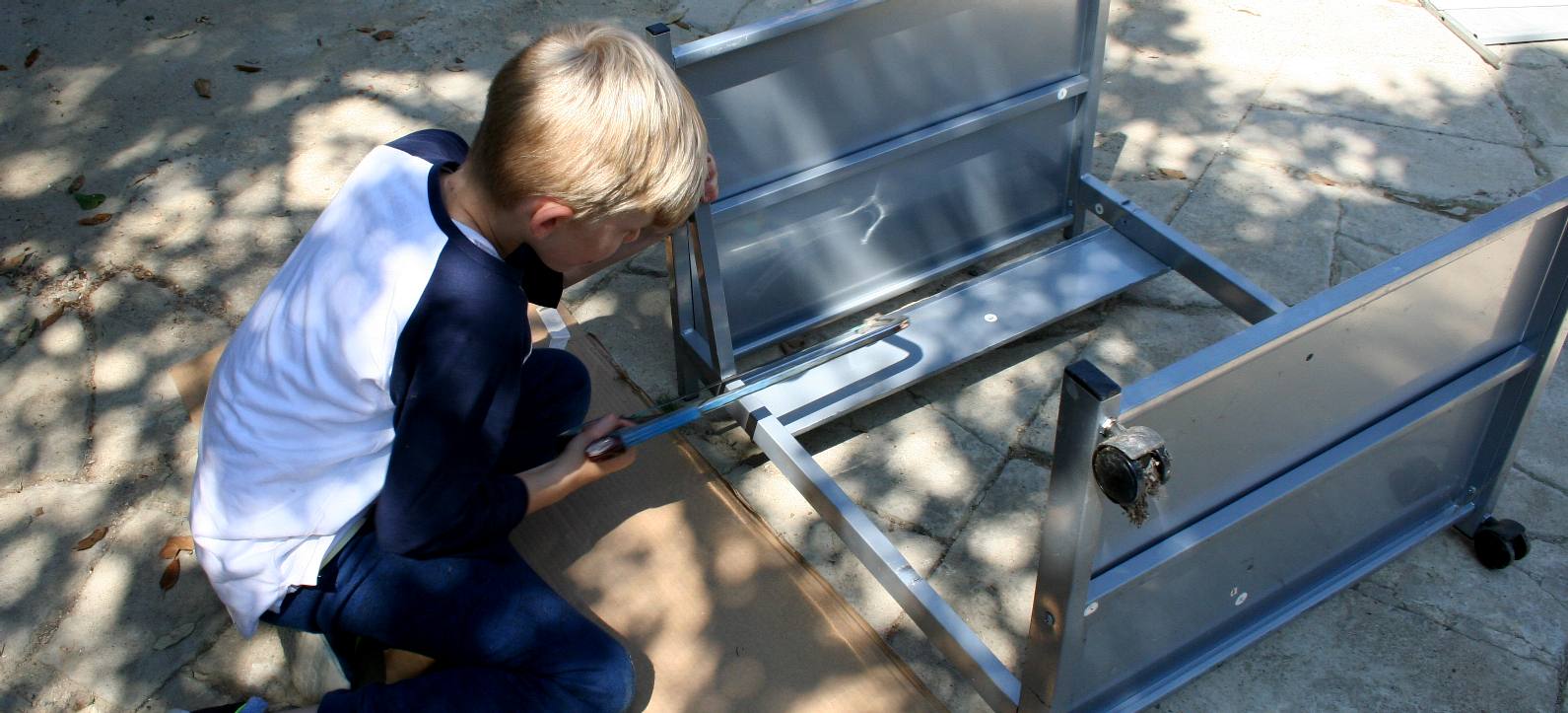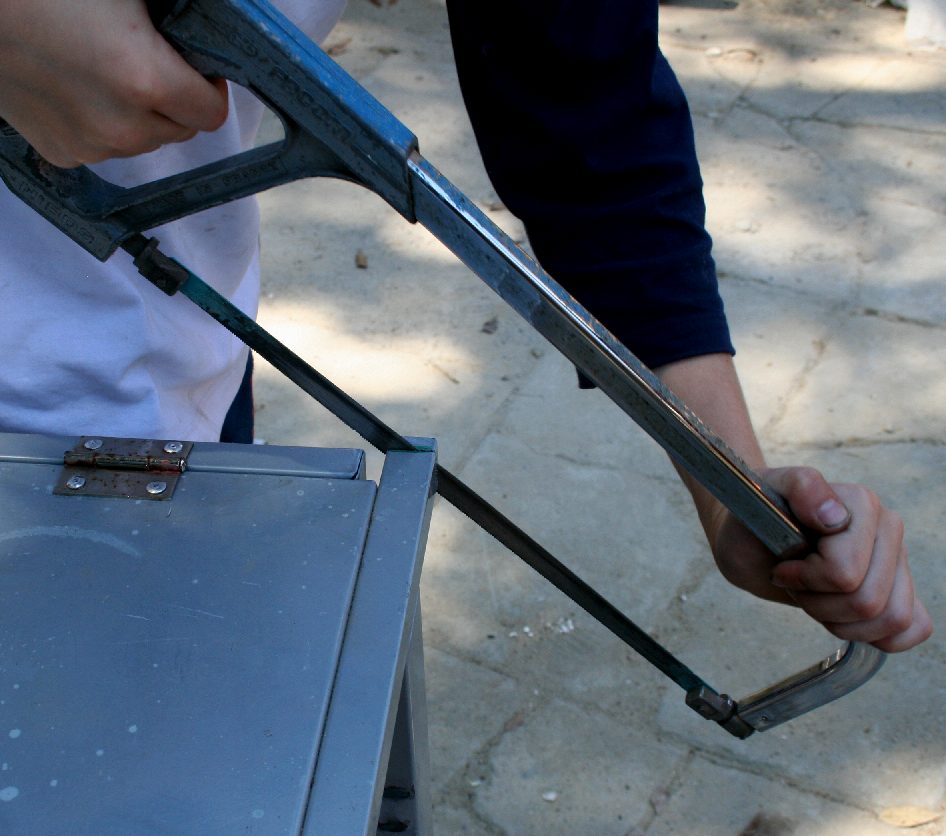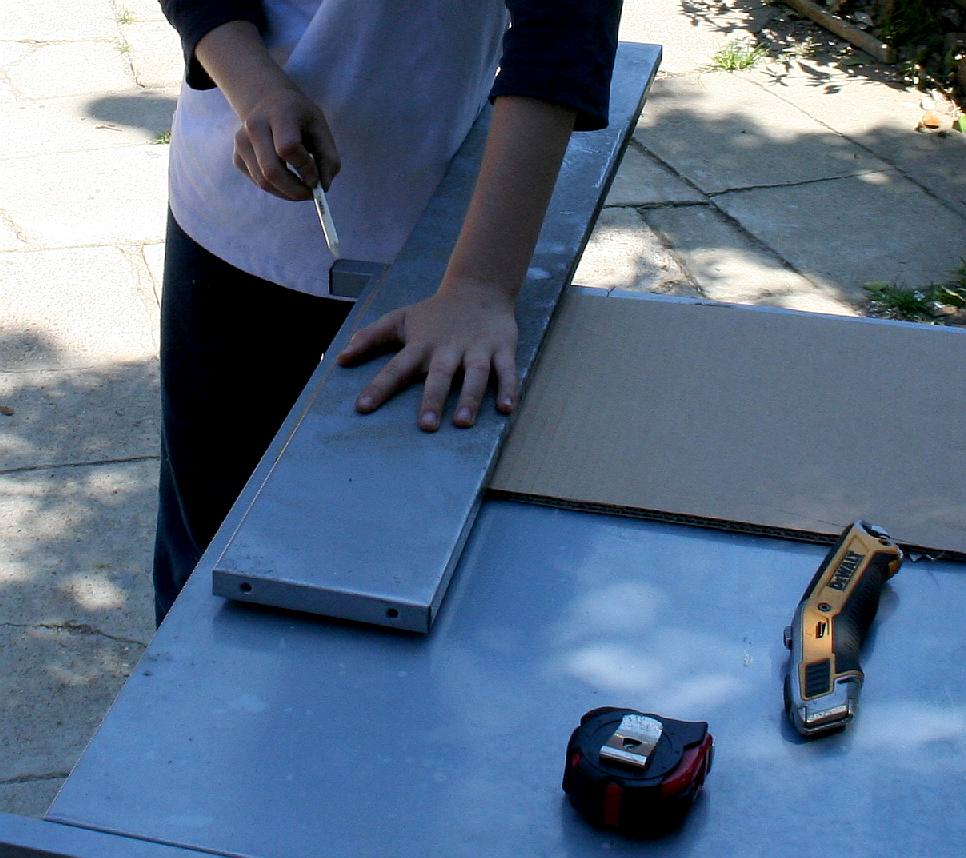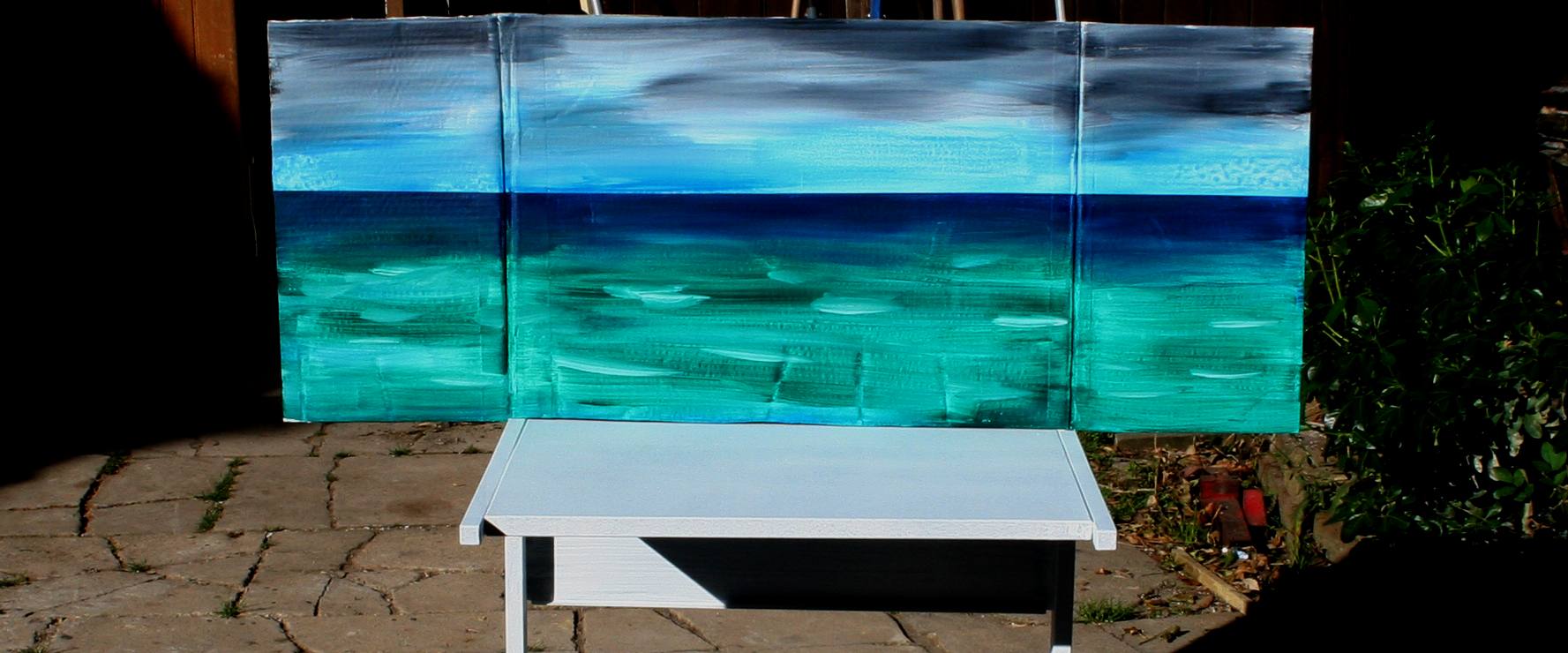|
AMPHIBIOUS LAUNCH - AMPHIMAX - CHASSIS - DIESELS - FLOATATION - HYDRAULICS - LAUNCH SITE SX - MODEL 1/20 - TIMETABLE - TRACKS - TRAILER - WHEELS
|
||
|
SOLAR PANELS - Hi, I'm Ryan and I have a new website. It's about the importance of our planet and what will happen if we don't stop doing what we are doing to harm this planet. If we don't stop the planet will crumble and eventually all life on earth will die. The website will ROBOTICS AND SPACE EXPLORATION. I'm a United Nations Watch dog. If you are worries about the UN members not behaving themselves, you might want to be a UN Watch dog.
Ryan helped to make sure that these solar panels will fit within the width of a Ford Transit roof with sufficient clearance for other side mounted panel arrays to fold over. The Transit is being used as the vehicle for an experimental mobile rig that also has wind turbines to harvest free renewable energy from nature in the fight against global climate change. Copyright photograph © 22-04-19 Cleaner Ocean Foundation Ltd, all rights reserved.
BASICS - In amongst the high-tech skills that Ryan is learning, in the above pictures you can see him scraping and sanding the walls of an old Second World War bomb shelter that is being converted to a marine biology laboratory. When the preparations are complete, he will help to roller and brush apply two coats of G4 resin to seal the unit - so that it can be fitted with lab equipment and storage cupboards. Copyright photograph © 26-07-19 Cleaner Ocean Foundation Ltd, all rights reserved.
RESEARCH & DEVELOPMENT - [Left] Lolita D'Ortona is a Belgian student helping to develop the wind and solar energy harvesting system for SeaVax as part of her final year project, for her Masters degree in agri-engineering. Ryan accompanied Lolita to Hastings on a fact finding mission, checking out the famous beach launched fishing fleet. Copyright photograph 16 March 2019 © Cleaner Ocean Foundation Ltd. All rights reserved.
EDUCATIONAL GAMES - Ryan was the first person to reach two stars in helping to develop an educational game that is to be a free download as a smartphone app when it is completed. The objective of the game is to rid the world's oceans of marine litter, so helping to feed millions of starving people as food become more scarce from a growing population. Copyright photograph 16 March 2019 © Cleaner Ocean Foundation Ltd. All rights reserved.
REFILL EASTBOURNE - Ryan was at the Refill event on Saturday when Stephen Lloyd, the MP for Eastbourne visited the SeaVax stand while attending the event. Stephen Lloyd represents the Liberal Democrats as a long serving Member of Parliament. Copyright photographs 26 January 2019 © Cleaner Ocean Foundation Ltd. All rights reserved.
FASTEST - The first of four aluminium bulkheads is offered up for size against a wooden buck - on what is likely to be the world's fastest solar powered autonomous boat - once completed. The alloy panel is a perfect fit. But, don't worry if you make a part that is not quite right. You can fettle it a little until it slots into place. If the part is way out of tolerance, just start again and be more careful in your lofting and cutting. Copyright photographs 18 November 2018 © Cleaner Ocean Foundation Ltd. All rights reserved.
HISTORY PROJECT - World War Two was a milestone in the history of mankind, lasting from 1939 until 1945. Millions of people were killed or injured during this conflict which saw technology accelerate dramatically, culminating in nuclear weapons against which there is virtually no escape. Home defence was very important during bombing raids with public shelters such as the London Underground offering some protection. In the country Anderson Shelters were very popular because they were cheap and easy to install. They were made of corrugated iron and covered in earth and sand bags to absorb the blast. Many lives were saved using this famous design. Ryan was lucky enough to visit a real bomb shelter at Herstmonceux in Sussex. Ryan is seen here standing in front of the extant structure that is constructed in brick with steel girders to reinforce the roof. He is holding his model of an Anderson shelter that is made from a steel can, painted and coated in earth and sand to replicate what a unit may have looked like. Ryan filled small bags with real sand to make sandbags, that he glued together with a hot glue gun. The base is plywood and he used 3mm plywood to make a door. WWII ended with most nations agreeing to implement the tenets of a Universal Declaration of Human Rights, via the United Nations, though many have strayed from the original objectives, possibly having lost sight of the horrors of war that led to concentration camps in Nazi Germany. Today the UN is pursuing Sustainable Development Goals designed to eradicate hunger and poverty. Copyright © photograph 14 October 2018 Cleaner Ocean Foundation Ltd. All rights reserved.
RESEARCH - Ryan was at the Ocean Symposium in Hastings on Saturday 22nd 2018. He is seen here with in the Crypt with the SeaVax, Chris Close (Project Director), the Mayor of Hastings, Councillor Nigel Sinden, and Nelson Kay (volunteer). Copyright © photograph 22 September 2018 Cleaner Ocean Foundation Ltd. All rights reserved.
RESEARCH - Ryan checked out this crane on hire by a local building firm to position some serious girders to stabilize an earth bank. The real Amphimax is assembled using something similar for lifting components into place, only a bit smaller. Copyright © photograph 17 June 2018 Cleaner Ocean Foundation Ltd. All rights reserved.
TARZAN - Nothing like a swing in the jungle, and this one turned out to be great fun. We'd only gone out for a ramble to get some air, not expecting to find this rope and branch just hanging their from the canopy about 14 meters high. Who could resist it! Thankyou to whoever tied the rope in place so well. Copyright © photographs 17 June 2018 Cleaner Ocean Foundation Ltd. All rights reserved.
SCULPTURE - The Easter school holidays meant a few days learning new skills in the workshops for Ryan. He is seen here holding one of the plywood formers that will piece together like a jigsaw to make a buck that is strong enough for the artwork of a 3 meter high figurehead for the SeaVax and a statue for a water fountain. Copyright © photographs 4 April 2018 Cleaner Ocean Foundation Ltd. All rights reserved.
YOUNG SCIENTIST - Ryan, is seen here feeling the force of accelerated air in turbocharged fashion. These are some of the fans that will generate simulated storms for the next series of tests of the SeaVax ocean cleaning dustcart. Copyright © photograph March 10 2018. All rights reserved. You will need the permission of the Cleaner Ocean Foundation to reproduce these pictures except for educational use or private research.
MINIMAX - Ryan is seen here learning to fly a drone quad-copter. The SeaVax carries a drone for anti-piracy patrols and to investigate plastic accumulations and jellyfish blooms. Copyright photograph November 19 2017, all rights reserved. You will need the permission of Bluebird Marine Systems Ltd to reproduce this picture.
MINIMAX - Ryan decided that he liked the look of the 1/20th scale proof of concept model of the 'AmphiMax' portable dockyard, but it was a teensy bit big for him to store at home. So he opted to build his own version at 1/40th scale - exactly half the size of the model being made on this page. He is seen here some way into the wiring of the 9 volt track units. Why not follow Ryan as he builds his MiniMax robot model. Copyright photograph June 25 2017, all rights reserved. You will need the permission of Bluebird Marine Systems Ltd to reproduce this picture.
This page is dedicated to the making of Ryan's half size version of the AmphiMax amphibious vehicle, including the background research and what inspired the production of such a working model. Ryan had seen the AmphiMax taking shape in the Bluebird Marine workshops as the SeaVax team brought the concept to life - and decided that he would like to build one for himself - even if not an exact copy.
Before anyone could stop him, he had set up a workbench of his own and began cutting wooden batten off-cuts to length. Chris (our project manager) saw this and showed Ryan how to cut square using an ordinary wood saw and a workmate. Ryan had seen the scale drawings of the AmphiMax in the canteen and used these to get the basic dimensions.
Before long Ryan had cut all the pieces of the frame and wanted to screw them together. He used a pencil to mark where the wooden sections should go and set them out. Whenever Ryan got stuck on a construction problem he asked one of the adults for advice. He got permission to help himself to production paper and adhesives, and the tools that he might need.
Pretty soon Ryan's version of the AmphiMax, that he calls the MiniMax, was taking shape. He wanted his MiniMax to be painted machine yellow like the real one. The SeaVax team had some small undercarriages they had been experimenting with spare, and gave those to Ryan for his project. Wheels might be an option to explore in the future.
Armed with 8 caterpillar type model tank track units of the type used by robot makers, Ryan was enthused to see his machine working. But, did not at first realise how much work this would mean.
The real AmphiMax is designed to launch SeaVax machines into our polluted oceans. When Ryan was making this model he learned a great many DIY skills/ These included:
1. That a sharp pencil is the most important tool in the workshop. 2. That a good ruler or tape measure is vital equipment. 3. That using a workshop is a good idea, though it is possible to use your bedroom, except for spray painting that should be done in a well ventilated area. 4. How to cut wood square. 5, How to use a drill and pick the correct size screws and drill bits for a job. 6. Drilling wood and using a battery drill to screw parts together. 7. How to use glue and a set-square to make sure that your model is accurate. 8. How to sand wood smooth. 9. How to use polyester paste to fill imperfections in your wood. 10. How to prime wood to protect it from water and prepare for a topcoat of paint. 11. How to spray paint a gloss topcoat. 12. How to fix a number of tracked undercarriages to a wooden frame. 13. How to wire up the electric motors of the undercarriages to a battery bank. 14. How to connect a radio receiver to control electronic speed controllers to drive the MiniMax.
OCEAN BUSINESS - Opening doors; the entrance to the NOC welcomes you in many languages. This is the place to be if you are interested in a career in marine science. The National Oceanography Center in Southampton hosted the Ocean Business event in April 2017 where you can see the latest underwater measurement and robotics technology, aerial drones, cameras and other marine equipment - and attend the Ocean Careers lectures and advice clinics. As a potential student candidate and end user of the technology, Ryan soaked up the atmosphere that has inspired so many great advances in marine science. Copyright photograph April 6 2017, all rights reserved. You will need the permission of the Cleaner Oceans Foundation to reproduce this picture.
PREPARATION - Painting is all about preparation. There is no point even shaking the primer can if you have not sanded your wooden work piece to get rid of any loose splinters. Spend as much time as you can afford to get your model looking good. Once sanded to get rid of all the obvious rough edges and milling lines, it is time to get out the polyester filler paste. When working with wood, you mostly sand along the grain. Copyright photograph, 19 November 2016, all rights reserved. You will need the permission of Bluebird Marine Systems Ltd to reproduce this picture.
INSPIRATION - MiniMax V AmphiMax. Ryan prefers his robot to the one in the lab, because he can carry it complete with caterpillar tracks and batteries. The 1/20th scale version that is to be used to launch the SeaVax model is just that bit too big for a Year 4 student. Copyright photograph, 19 November 2016, all rights reserved. You will need the permission of Bluebird Marine Systems Ltd and Ryan Dusart to reproduce this picture except for private study and research.
APPLICATION - Having dusted off the model, Ryan applied filler paste to the flaws in the battens. Batten is used to make roofs for houses. It is pressure treated so that it will not rot. It is also relatively cheap to buy from your local timber merchants. This batten came from Stamco in Eastbourne. Ryan learned how to mix polyester paste and clean the plastic spatulas to get a smooth fill. Polyester filler is commonly used to repair car bodywork, but Ronseal do a version that is wood coloured. Next time you are in Halfords, go to the paint section and you will see large tubs of it next to the sandpaper. Copyright photograph, 19 November 2016, all rights reserved. You will need the permission of Bluebird Marine Systems Ltd to reproduce this picture.
SHAPING - Filler paste is not only used to fill knots and gauges in the wood, but can repair chipped edges and seal the grain. Ryan used 40 grit on a very small block of wood, working his way to 120 grit before applying a good coat of primer. Copyright photograph, 19 November 2016, all rights reserved. You will need the permission of Bluebird Marine Systems Ltd to reproduce this picture.
MOUNTING BLOCKS - While waiting for the filler paste to harden, the next job was to work out how to fix the plastic undercarriages to the wooden frame. With a little help, Ryan solved this by using wooden blacks made from more batten off cuts and some scrap plywood. The undercarriages had to be drilled to screw the blocks to the plastic chassis, then the blocks bonded together with waterproof PVA wood glue from Toolstation just off Lottbridge Drive in Eastbourne. Most workshops have a variety of glues on the shelves that you can use a bit of - but be sure to ask the proprietor for permission. Copyright photograph, 19 November 2016, all rights reserved. You will need the permission of Bluebird Marine Systems Ltd and Ryan Dusart to reproduce these pictures.
REPETITION - The bad news is having to repeat a task several times, because it can get boring. That is why we use factories to mass produce goods for us using robots that don't get tired. When Ryan was bored he tended a bonfire and cut up some logs outside, then after warming up, came back to his project. It was a cold day so he had to keep on the move. The workshop he was using was open to the elements. The woolen hat he is wearing is necessary in these conditions. Copyright photograph, 19 November 2016, all rights reserved. You will need the permission of Bluebird Marine Systems Ltd and Ryan Dusart to reproduce these pictures.
TEST FIT - With the blocks fixed to the tracked tank units using two start-drive screws, it was time to make sure there was enough clearance - and to number each track and the position that it would be in when fixed to the wooden frame. After that the frame was marked out and drilled through with a 1.5mm drill to create a pilot hole. The frame is also numbered underneath to make sure that each track is fitted to the corresponding drill holes. That way if there is any slight variation in marking out and drilling (by hand) the tracks will fit. Once the pilot holes were drilled, the wooden frame was taken off the undercarriages and the pilot holes on the wooden chassis were run through with a 4.5mm drill. Two 40 millimeter long wood screws were used to fix each undercarriage to the main frame. Copyright photograph, 19 November 2016, all rights reserved. You will need the permission of Bluebird Marine Systems Ltd and Ryan Dusart to reproduce these pictures.
PROGRESSION - After a couple of hours hard graft this is where we were. Copyright photograph November 18 2016, all rights reserved. You will need the permission of Bluebird Marine Systems Ltd to reproduce this picture.
MODIFICATION - To be sure the wooden blocks would sit as square as possible some of the plastic parts had to be removed from the inside of the undercarriages. The holes drilled in the main frame were then countersunk on the advice of an elder. This is so that the wood does not split when a screw is tightened. It only takes a few seconds longer for each hole and it also looks nicer. Copyright photograph, 19 November 2016, all rights reserved. You will need the permission of Bluebird Marine Systems Ltd to reproduce this picture.
ASSEMBLED - Here you see a picture of Ryan taking his MiniMax home. The motorised undercarriages are firmly screwed to the main frame. Ryan will be wiring up this model the next time he visits the workshop facilities. The MiniMax will be battery powered and eventually radio controlled. Ryan has also done some shaping work on a giant animatronic robot ant called a DinoBot. But that is only ever worked on at Christmas time because it is traditionally a holiday project. Many museums now have large displays of dinosaurs that move and scientific researchers use robot fish and dolphins to film wildlife. Copyright photograph, 19 November 2016, all rights reserved. You will need the permission of Bluebird Marine Systems Ltd and Ryan Dusart to reproduce this picture except for private study or educational purposes such as in schools and colleges.
SPEED CONTROLLERS - On a breezy summer Sunday afternoon Ryan set about wiring up the undercarriages, left and right going from the batteries through two digital speed controllers. He used connector blocks (chocolate blocks) to divide up the power supply and get to every tracked unit in a pattern that would allow him to steer the amphibious boat launcher. In the right hand picture you can see the radio receiver. balanced on top of the 8.4 volt nickel-cadmium battery pack. This is a little below the voltage that the twin motor drives can handle comfortably, but sufficient to drive the MiniMax at a respectable pace. Ryan believes that machines like this will help feed the world in the drive for blue growth, cleaner oceans and healthier wild fish using green vessels that do not add to climate change. Copyright photographs June 25 2017, all rights reserved. You will need the permission of Bluebird Marine Systems Ltd to reproduce this picture.
TRAILER LAUNCH - This picture is of a radio controlled Traxxas 4x4 launching a model hydroplane (catamaran) and then recovering the same model. The Youtube video of this sequence is seen below where you can see for yourself how difficult it is to reverse a model toting a trailer rig. It must have taken two drivers to perfect this sequence, or one driver hopping from one radio set to another. However it was achieved, it is a good job.
SCHOOL HOMEWORK - Honing up his woodworking skills in a cold workshop in winter, Ryan helped to sculpt this scale model of a Viking longboat using scraps of wood he scavenged from the off-cuts pile. He was carefully supervised throughout the two hours it took to research the subject and then to carve this model. He was given tuition as to how to cut wood safely using a vice and other equipment. Copyright photographs, 22 January 2017, all rights reserved. You will need the permission of Bluebird Marine Systems Ltd to reproduce this picture.
LOLA & RYAN - Learning team skills is just as important as learning art skills. Ryan teams up with Lola who is also keen to to learn how wood carving is done, but also to be taught how to code, like the Coding Queens from California. Copyright photograph May 2017, all rights reserved. You will need the permission of the Cleaner Ocean Foundation to reproduce this picture.
TIMBER SUPPLIES - The darker pine car carving is some 15-20 years old, while the lighter car in front was carved just the other day from drawings that Ryan has been working on. The timber is an off-cut from a length of C24 grade 95mm x 45mm treated timber from Stamco in Eastbourne. This is the one of the sections of wood that was used to build the robot lab for SeaVax development. Copyright photograph May 2017, all rights reserved. You will need the permission of the Cleaner Oceans Foundation to reproduce this picture.
As a junior member, Ryan will help his team-mates to carry out experiments with the AmphiMax, as it carries the SeaVax into water and launches the ocean cleaning vessel. In helping with the project he is likely to learn about:
15. How solar cells go together to form a solar panel. 16. How wind turbines produce electricity. 17. Automation and robotics. 18. Boat and transporter design principles. 19. Electric motors. 20. Hydraulics.
SeaVax is not just about cleaning plastic from our oceans, it is about providing food security in a world with a growing population and reducing land mass to cultivate.
LINKS & REFERENCE
http://www.dewalt.co.uk/ https://www.arduinostarterkits.com/ https://en.wikipedia.org/wiki/Arduino https://www.arduinostarterkits.com/resources/robot-kits-adults/ http://www.bonfiglioli.com/ http://www.poclain-hydraulics.com/
AMPHIBIOUS LAUNCH - AMPHIMAX - CHASSIS - DIESELS - FLOATATION - HYDRAULICS - LAUNCH SITE SX - MODEL 1/20 - TIMETABLE - TRACKS - TRAILER - WHEELS
ANIMATRONICS - Ryan keeps sneaking into another part of the complex where a large hexapod robot is in store. Once he has completed his AmphiMax, he wants to learn how to program computers like the Arduino and Raspberry Pi micros to help get this formidable robot interacting with its environment. Ryan is seen here holding one of the two motors to power the animatronic that is based on a real life bulldog ant all the way from Australia. One motor is needed for each side of the giant insectoid. This will allow the programmers to steer the DinoBot. Slowing down one set of legs will cause 'Dino' to turn in the direction of the legs working the slowest. The motor and gearbox is a 500 watt unit more commonly used to propel electric cycles. You can see a 2kW lithium battery pack on the left and the chain driven main frame in the background. A 500 watt motor is a teensy bit more powerful than a Lego or other VEX, STEM plug and play systems - and way too expensive to learn with, but once beginners have mastered the basics using low powered robots, they may want to stretch their imaginations even further with projects that can do useful things in the real world. The giant hexapod that this motor drives provides a development platform that could lift heavy objects that are potentially dangerous, rescue humans from crash sites and more .....
ROBOTICS - Ryan earned himself this Arduino Uno starter kit, and a few books on the subject that you can purchase quite reasonably from Amazon. When he is ready to progress, he'll probably move up to the Makeblock kit to master robotic movement and control and from there who knows .....
OCEAN CAREERS - The facilities at the NOC are owned by the National Environment Research Council, an organization that exists, as the name implies, to conduct ocean research for conservation purposes and to better understand the natural world. Copyright photograph April 6 2017, all rights reserved. You will need the permission of the Cleaner Oceans Foundation to reproduce this picture.
TUDOR ROSE - In year 4 at his junior school in Old Town, Eastbourne, Ryan was assigned the task of producing a Tudor Rose from materials that are found around the home. He scouted a bit of old pine planking and set about learning how to carve using a Dremel and a modeling knife (under supervision). He also learned how to seal the wood and use acrylic paints to complete his task. Copyright photograph April 30 2017, all rights reserved. You will need the permission of the Cleaner Oceans Foundation to reproduce this picture.
OTHER PRACTICAL SKILLS - Ryan uses a spray can of line marking paint to outline the position of a drain so that later a section of weed control barrier can be removed to allow the drain to work. Ryan is learning construction skills while he helps his team mates improve the robot making facilities that he is allowed to use for his MiniMax. This photograph is Copyright © March 2017, all rights reserved. You will need the permission of Bluebird Marine Systems Ltd to be able to copy, save or reproduce it.
GO APE - Humans love climbing trees, though much removed from the days when we needed to escape from the ground or even live in tree houses, it is still in our genes and the exercise is good for us. Trees produce timber for house and boat building, furniture making and hundreds of other uses and are a sustainable resource. Ryan loves scaling this little oak tree that is only three fields away from his workshop, for those times when you simply must have a break and get back to nature. This photograph is Copyright © 30 April 2017, all rights reserved. You will need the permission of Bluebird Marine Systems Ltd and Ryan to be able to copy, save or reproduce it.
SURVIVAL SKILLS - Using some old pallets, hammer and nails, Ryan is seen here building a den. The skills learned here will be useful in later life if he decides to build a house of his own, or gets marooned on a desert island like Robinson Crusoe. This photograph is Copyright © 24 September 2017, all rights reserved. You will need the permission of Bluebird Marine Systems Ltd and Ryan to be able to copy, save or reproduce it.
DEN - No den would be complete without a rope swing. Climbing and swinging is good exercise and a lot of fun. This photograph is Copyright © 24 September 2017, all rights reserved. You will need the permission of Bluebird Marine Systems Ltd and Ryan to be able to copy, save or reproduce it.
GRAPHIC DESIGN - Ryan is keen on drawing. In this picture we see him helping to construct a storyboard for Chapter 28 of a book where a giant humpback whale is saved from sharks by an ocean adventurer called John and his mate Dan. The idea is to read part of a book and then try to illustrate it. Ryan used some office whiteboards and dry markers to get the ideas down for a detailed drawing that would be done on paper with pencils and paint or inks. He is holding a pair of binoculars in his hand to get the drawing reasonably close to a real pair. Copyright photograph June 25 2017, all rights reserved. You will need the permission of the Cleaner Oceans Foundation to reproduce this picture.
GRAPHIC NOVEL - In these pictures we see how Ryan converted the roughs from the whiteboard to pencil sketches that he can work on until the ideas work well enough to be part of a comic version of the book by the eco writer: Jameson Hunter. Please note that these books are not yet published, but that copyright still attaches to the story, where they are at the moment incomplete works of fiction. Copyright photograph June 25 2017, all rights reserved. You will need the permission of the Cleaner Oceans Foundation to reproduce these pictures.
STUDY - Ryan is interested in art. He wanted to learn how to paint a portrait in oils. The picture above is a study in acrylic paints to meld the scenery from a local beauty spot in Sussex, Seaford Head, with a pencil sketch on canvas. It took about 45 minutes to complete the study to this stage, with another 15 minutes for a pencil outline. The next stage is to use this study to develop the same picture in oil paints. Oil paints allow an artist to work more slowly and precisely, for example to get the eye, ear and lip details more accurate. The disadvantage is that oil paints take a long time to dry between sessions. For this reason, the eyes will receive some attention next and after that the skin tone with basic shading. The ears and nose will follow and then the lips. This artist prefers to leave the hair until last. Ryan visited the background scenery location to see for himself what the famous Seven Sisters look like. If are fortunate enough to walk this site, please not that it is a nature reserve and also a site of special scientific interest (SSSI). So, please be careful not to unduly disturb the countryside. Copyright photograph September 3 2017, all rights reserved. You will need the permission of Bluebird Marine Systems Ltd to reproduce this picture.
VW SERVICE - This Volkswagen Golf was used to pick up four steel tool chests with sliding drawers from Aldi in Eastbourne over a weekend where the DinoBot workshop (formicarium) was undergoing a major refit to include the screeding of the floor. Once a couple of chests were loaded into/onto the car Ryan noticed that one of the back tyres was low on air pressure and that there was also a graunching noise from the front suspension when going over bumps. The rear tyre was quickly inflated and the front of the car jacked up and the wheel removed to inspect the suspension to try and locate the problem noise. The noise turned out to be a plastic trim that had partly fallen off and was soon rectified. While sorting that out Ryan and his mentor decided that the car needed an oil change and new filter. Ryan helped to remove and refit the front wheel and learned how to replace an oil filter, drain an engine and refill with clean oil. He will be helping out and learning about air cooled internal combustion engines during the restoration of a VW Camper and also working on an electric sports car - when space in his diary allows. Copyright photographs July 9 2017, all rights reserved. You will need the permission of the Cleaner Oceans Foundation to reproduce these pictures.
DISPLAY TABLE - Working under the supervision of an adult, Ryan selected an old computer table made of steel tubing as a donor to make a display stand for a school project. He cut off unnecessary steel tubing with a HSS hacksaw and pop-riveted a redundant shelf to the rear of the table top to make a folding upright backboard via two hinges, to save space when transporting. As one of the display items was his Viking boat, Ryan decided that it would be nice if this was shown against the backdrop of a seascape. The seascape was painted onto a section of one of the cardboard boxes that the tool chests were supplied in using acrylic paints. The cardboard was designed to fold around the stand uprights when the unit is stored away. Duct tape was used to reinforce the cardboard hinges and painted over. The whole stand was painted in white emulsion using a brush and roller - but could be painted in any colour for different occasions - and the table top could have side extensions (as folding flaps with stays) to increase the display area. Copyright photograph July 9 2017, all rights reserved. You will need the permission of the Cleaner Oceans Foundation to reproduce these pictures except for educational purposes.
ARDUINO - ARM HOLDINGS - BEAGLEBOARD - MBED - PCBS - PICAXE - RASPBERRY PI
ANTICS - ARDUINO - ARMOUR - ARTWORK - BIOLOGY - BLACK BOX - COMPUTERS - ELECTRONICS - ENERGY - FRAME - HEAD - JAWS - JIMMY WATSON - KITS - LEGS - MECHANICS - MOTORS - MOVIE - PHOTOGRAPHY - RASPBERRY Pi - R/C DRONE - SENTRY - SOFTWARE - SOUND PROOFING - SPEED - SUSPENSION - TAIL - WEAPONS - WARGAMING
DINOSAURS - DOLPHINS - HUMANOIDS - RAYS - SHARKS - WHALES
|
||
|
Click the links on this page or see our SITE INDEX to navigate this site. Copyright © January 2019 BMS Ltd.
|
